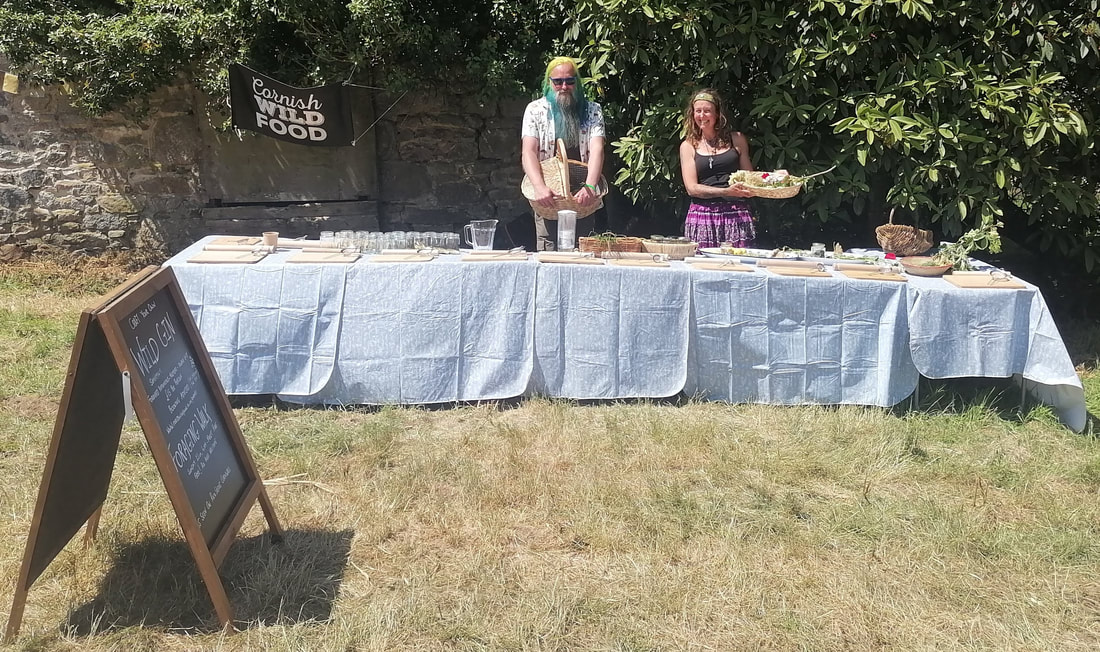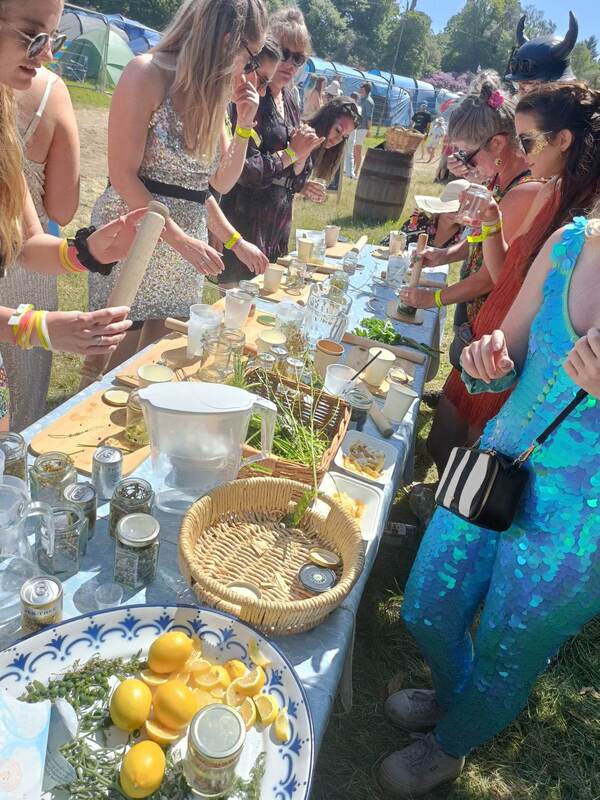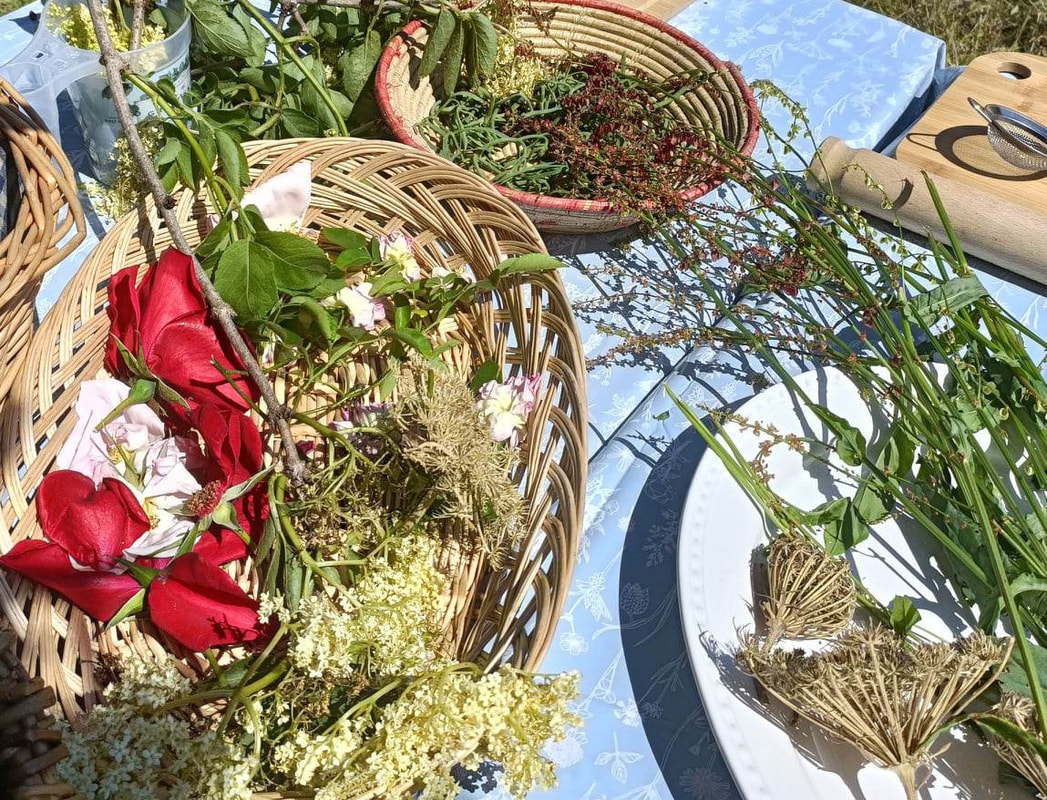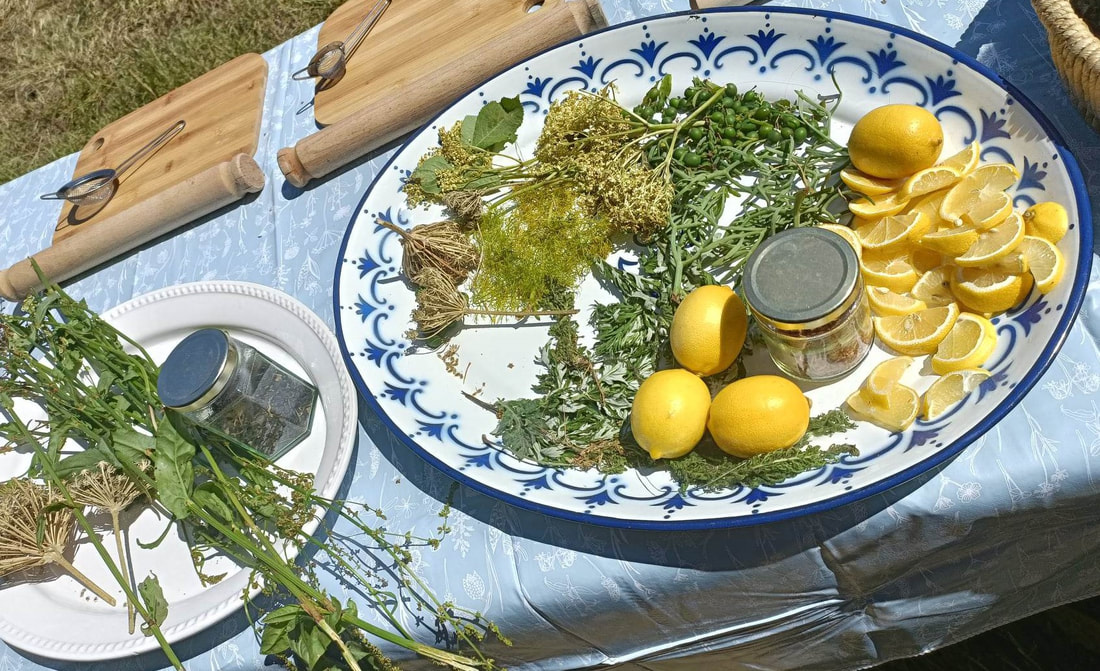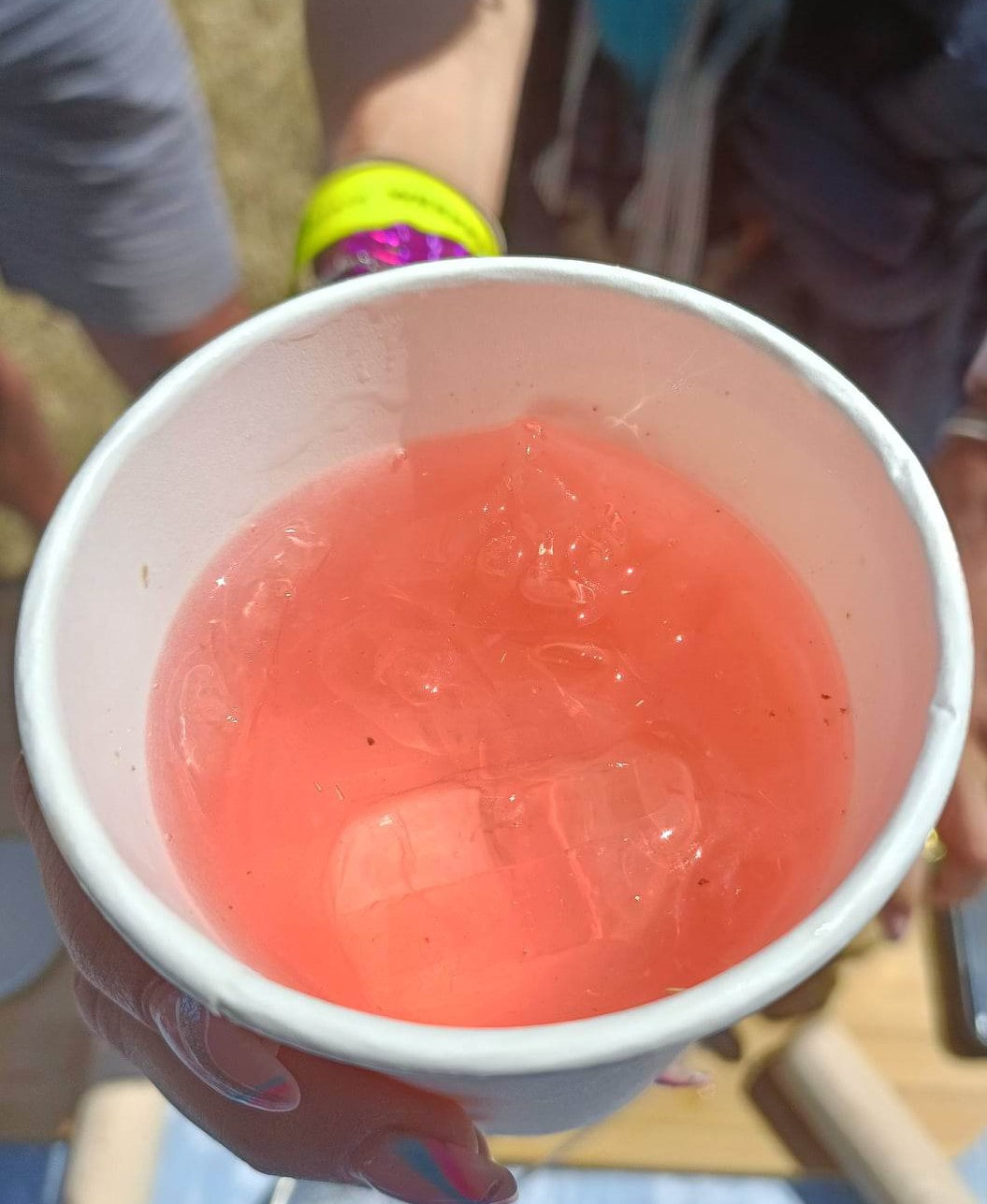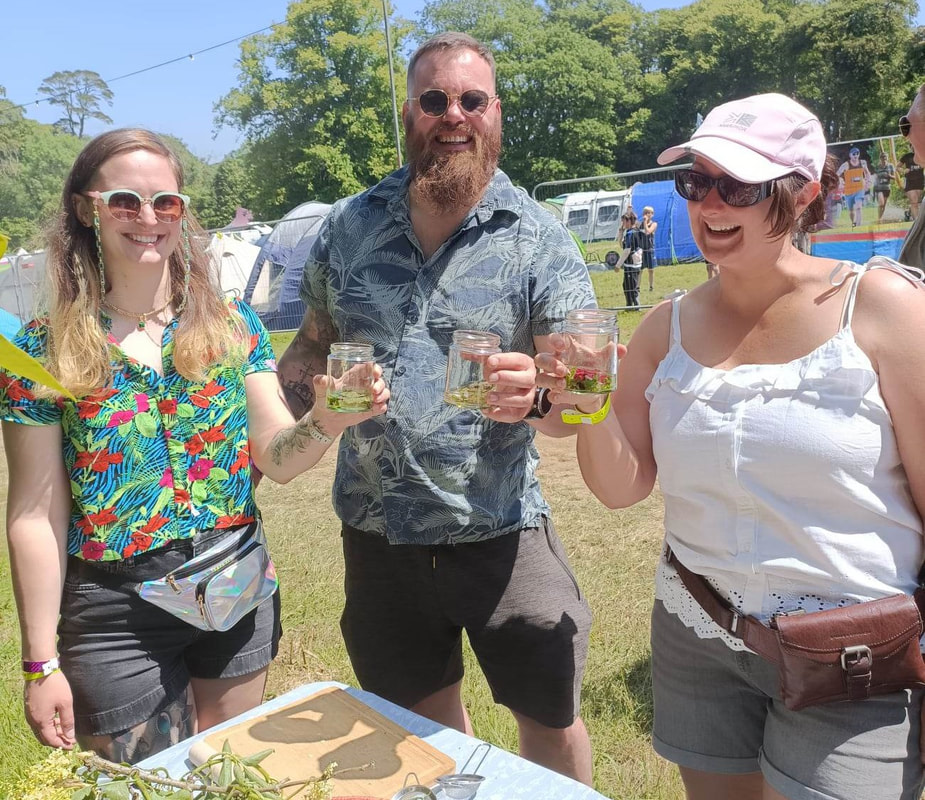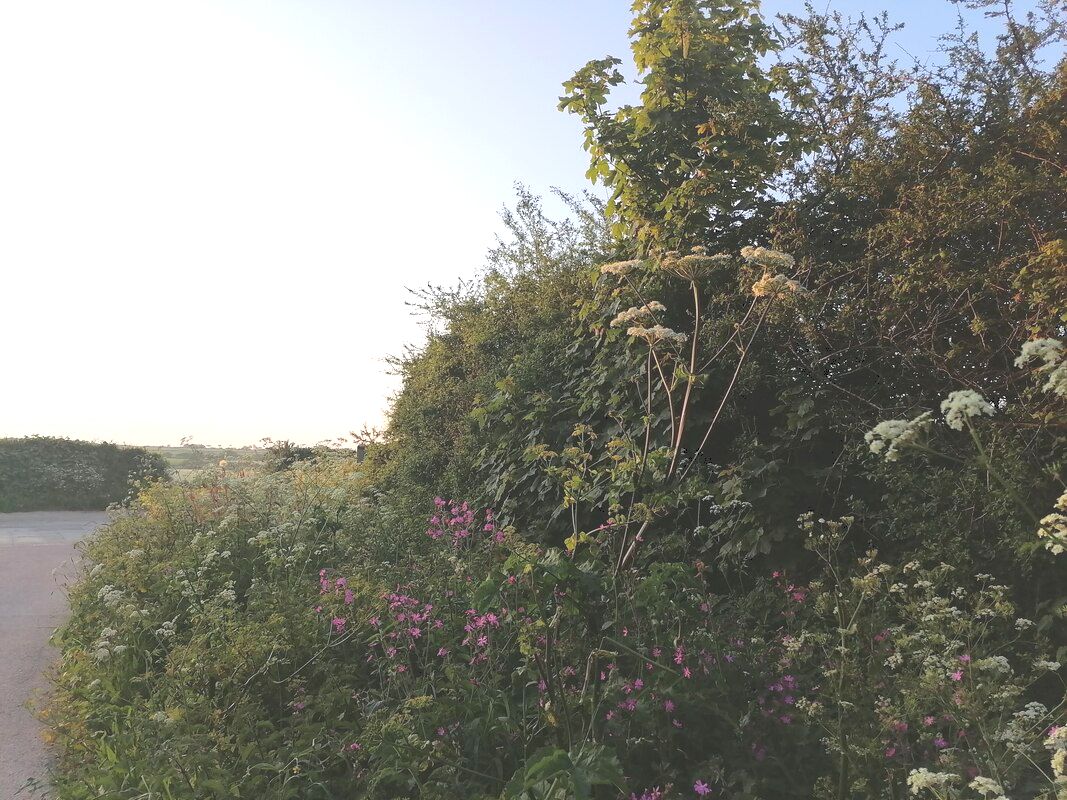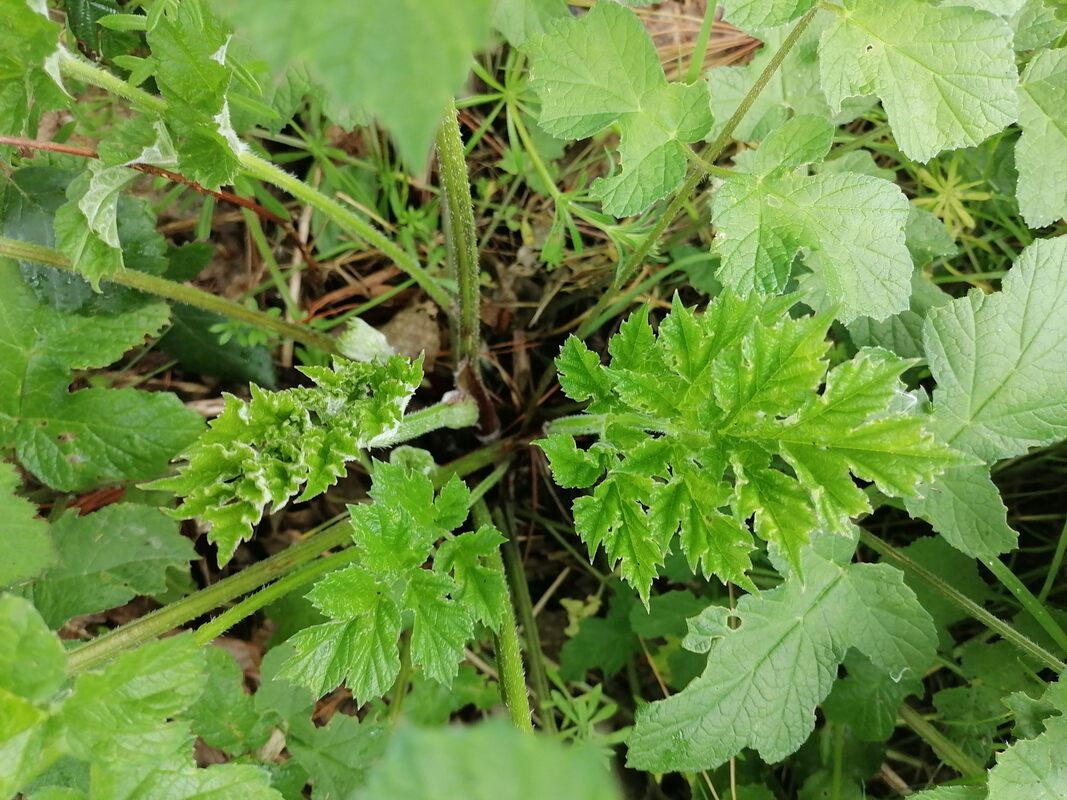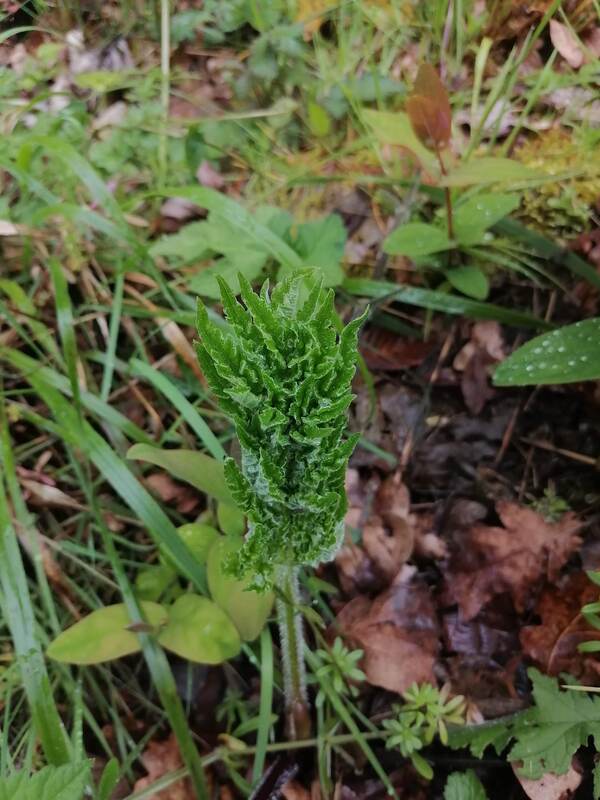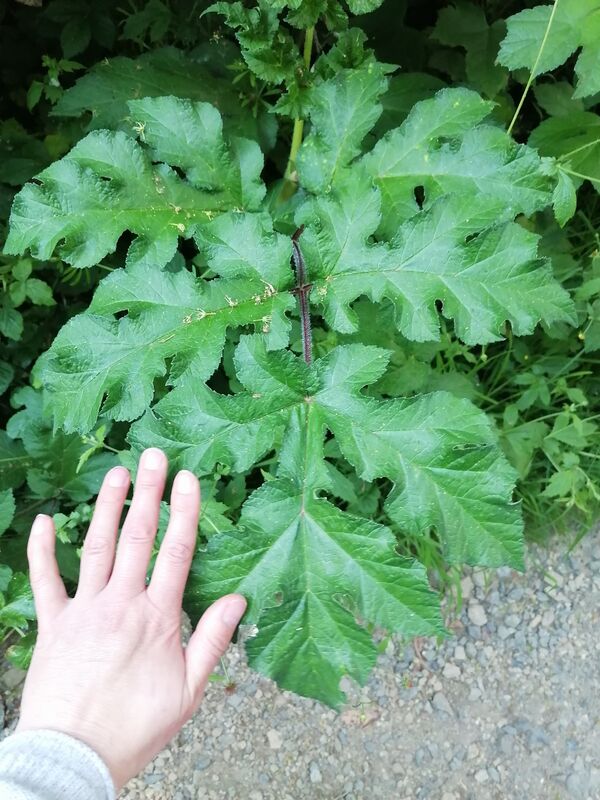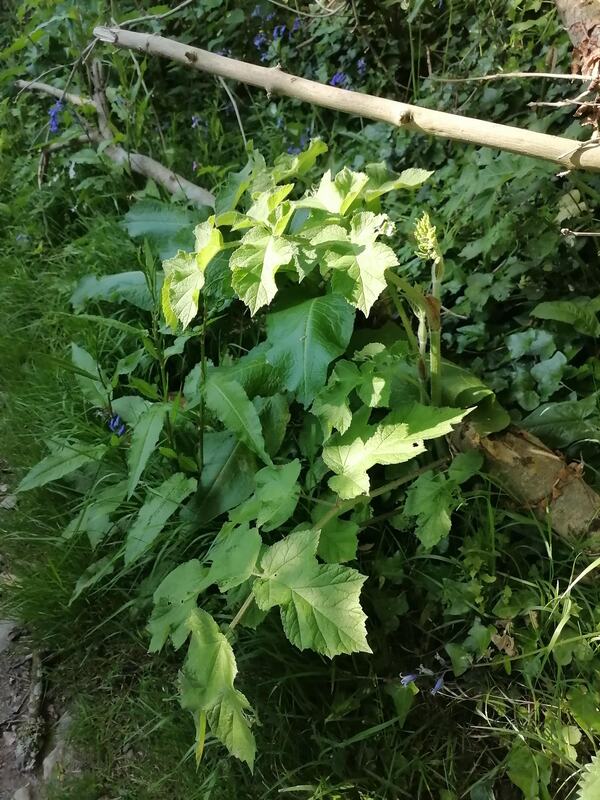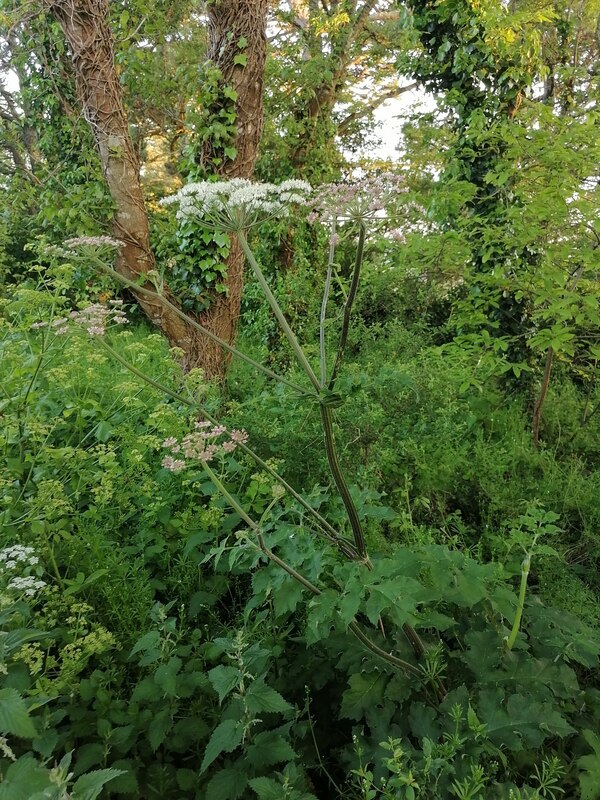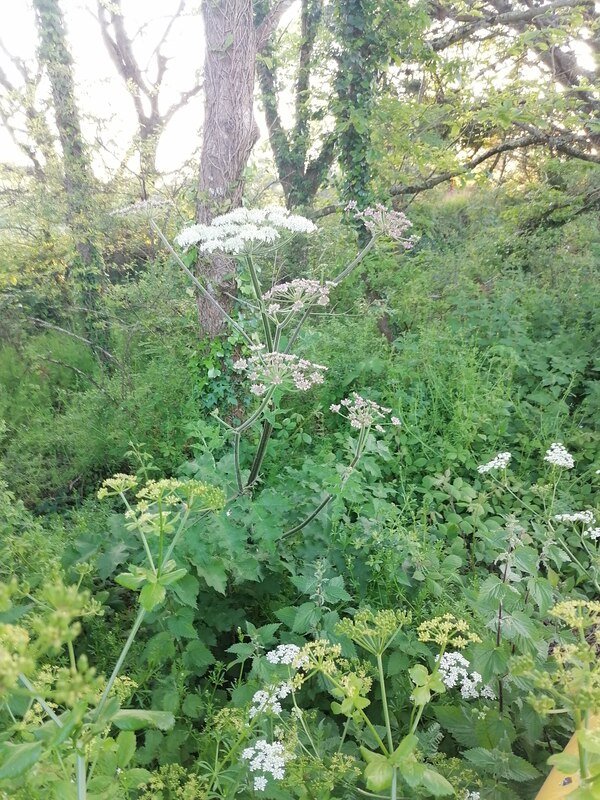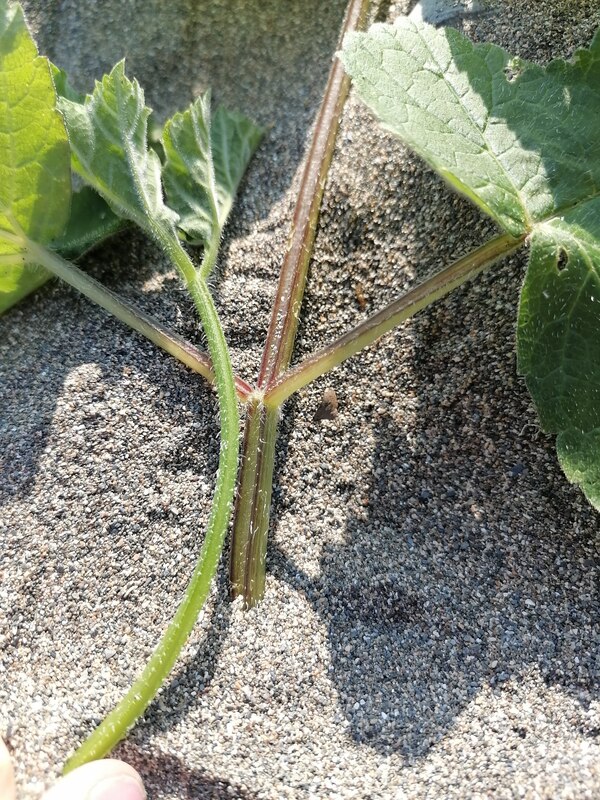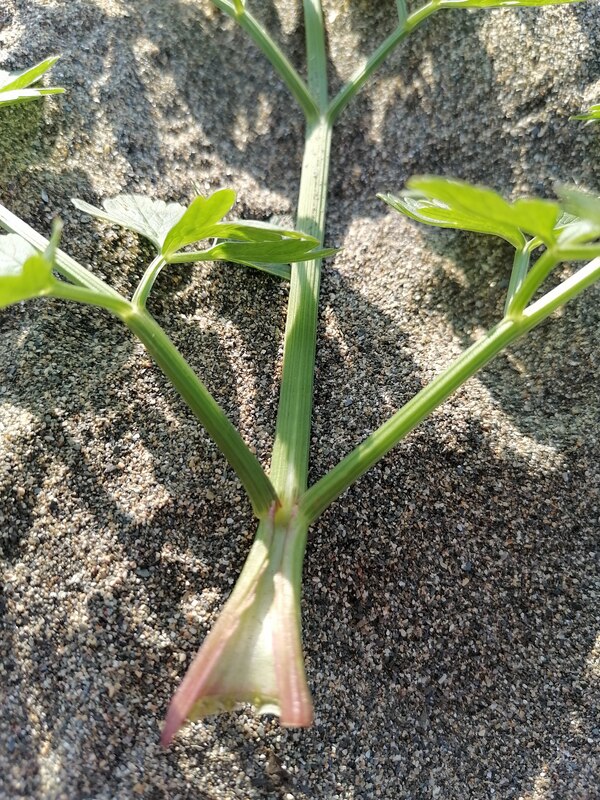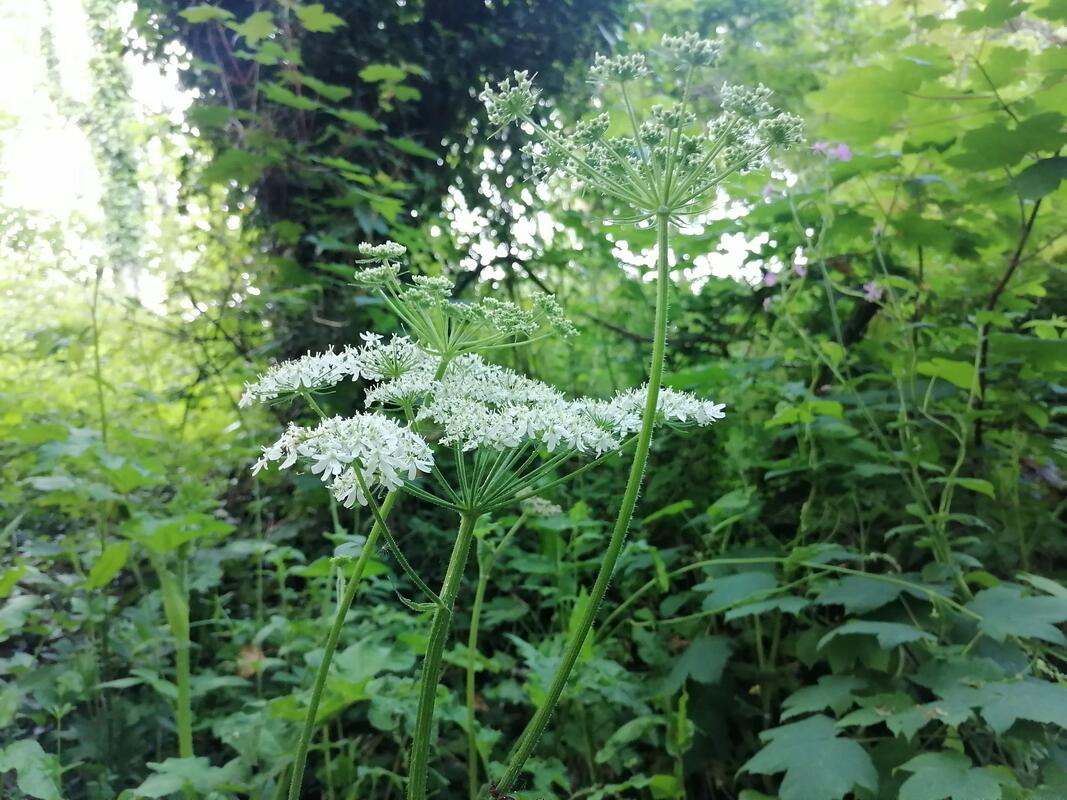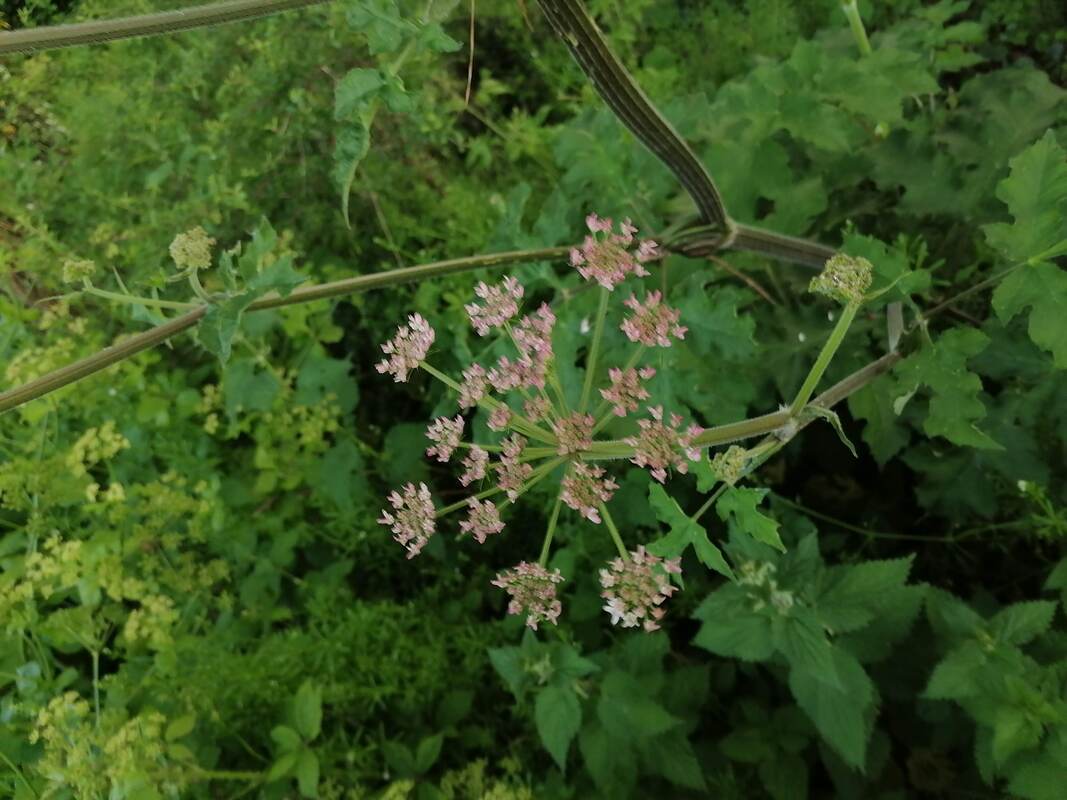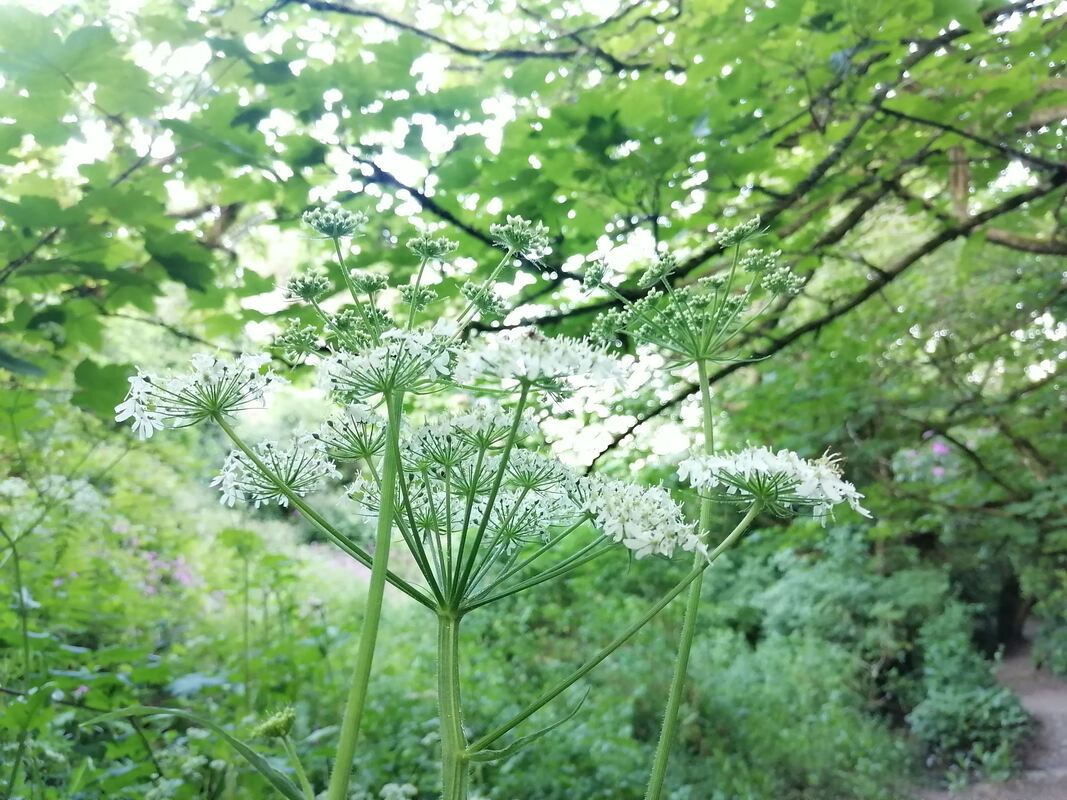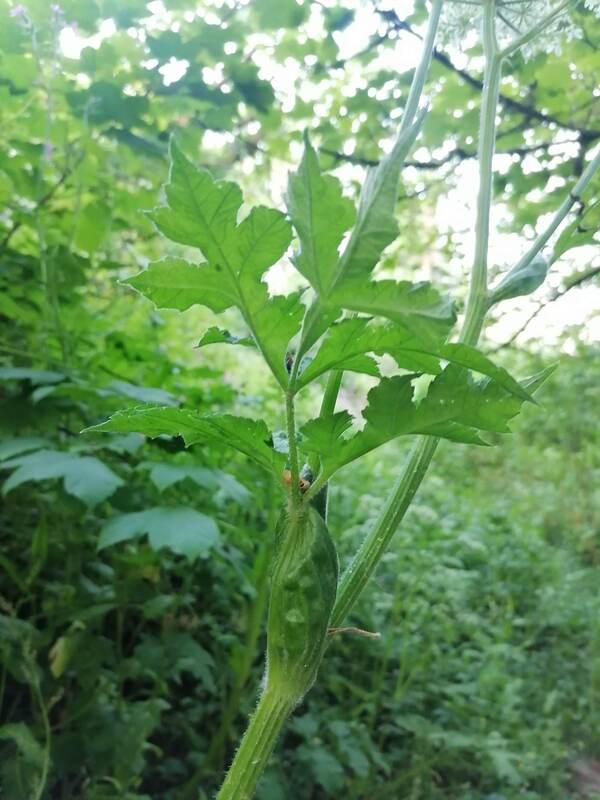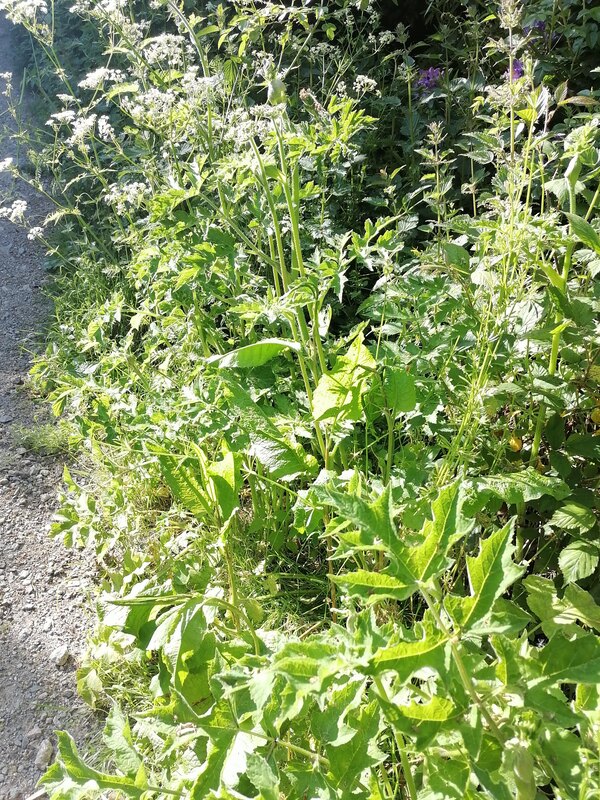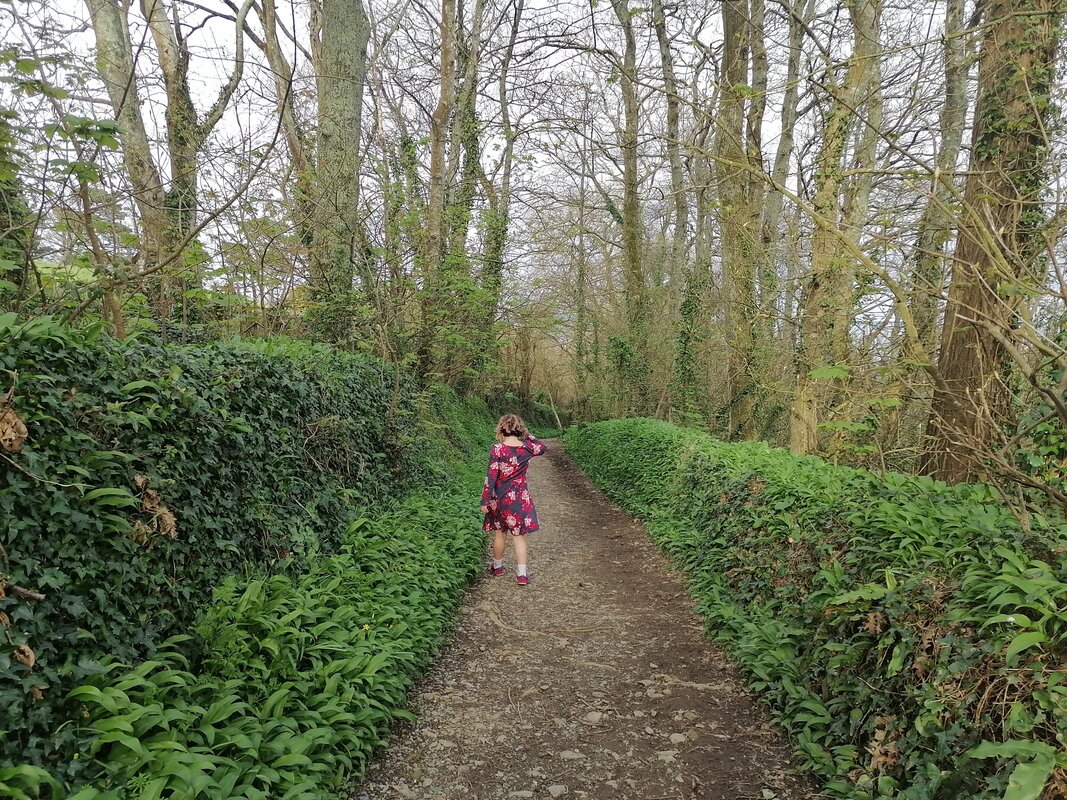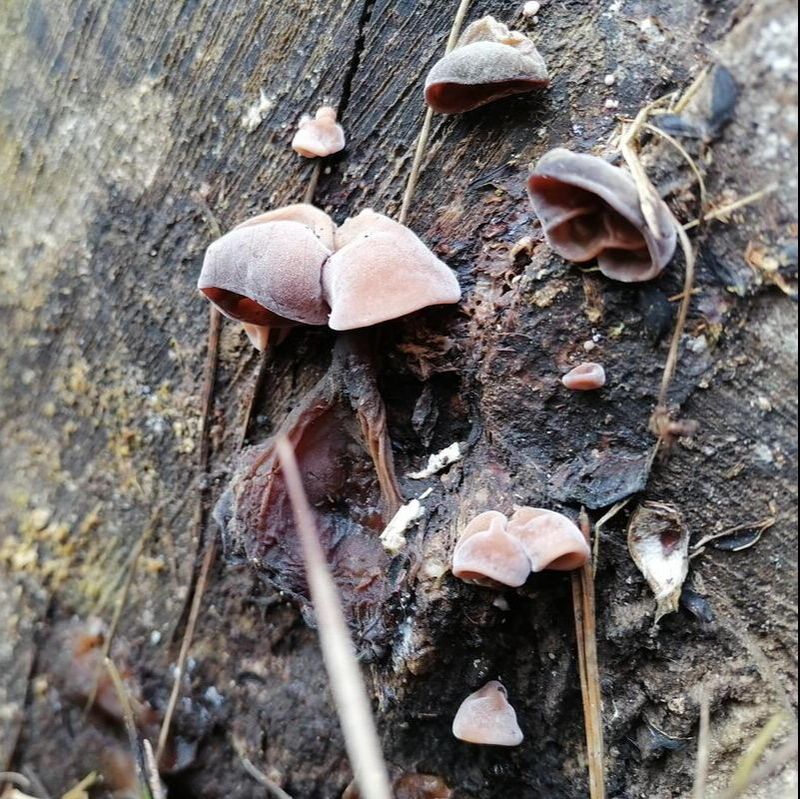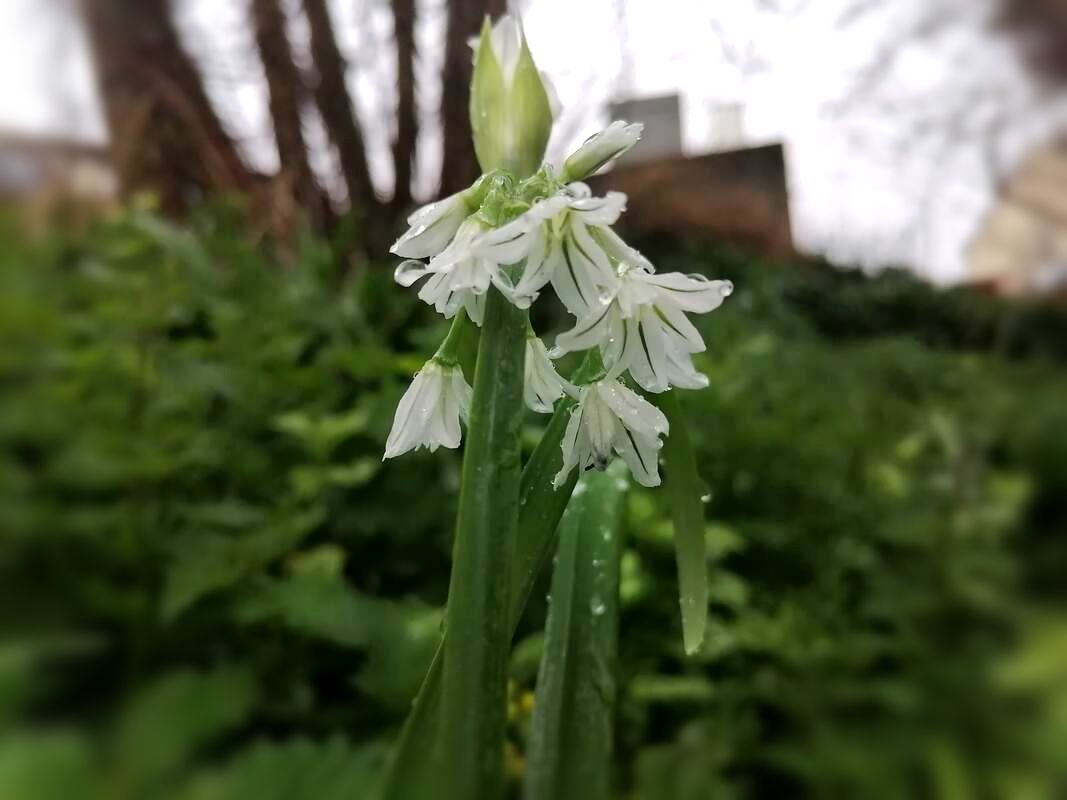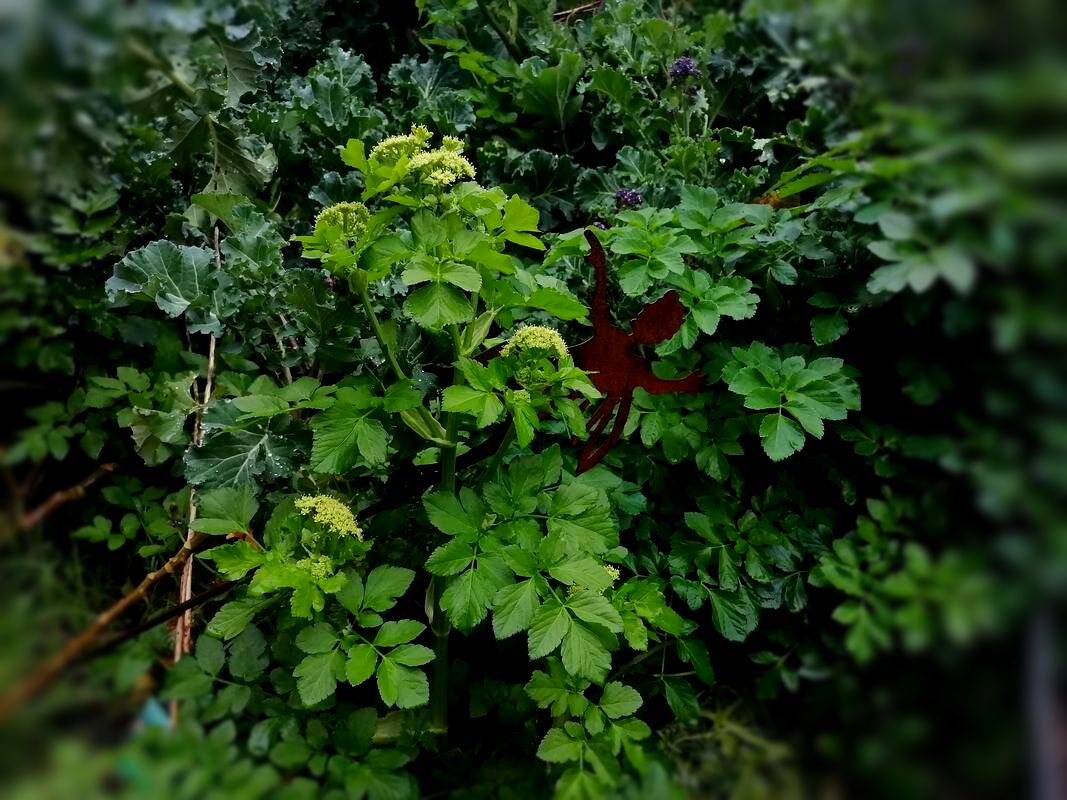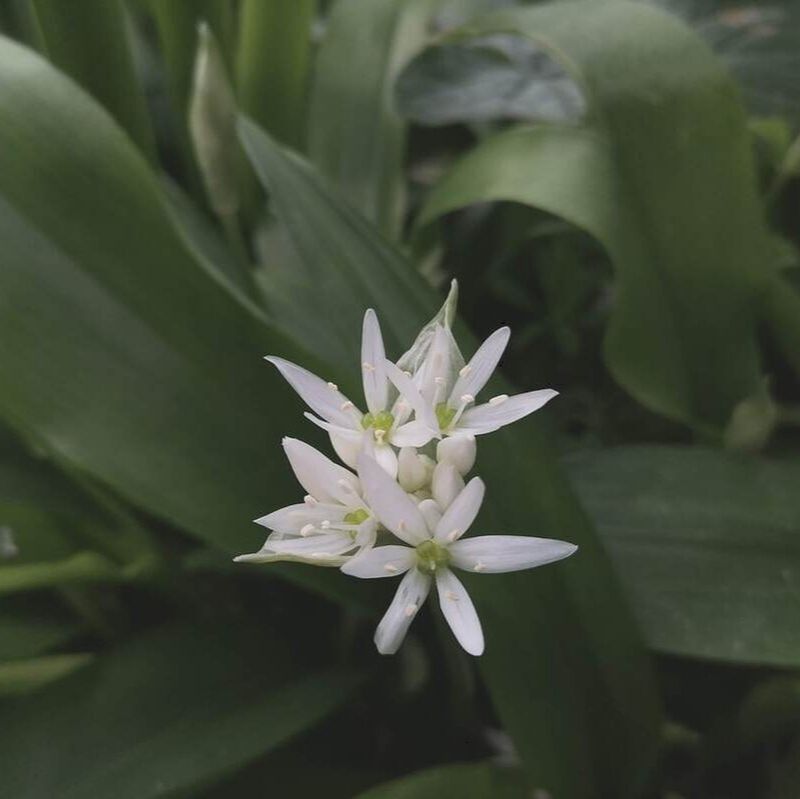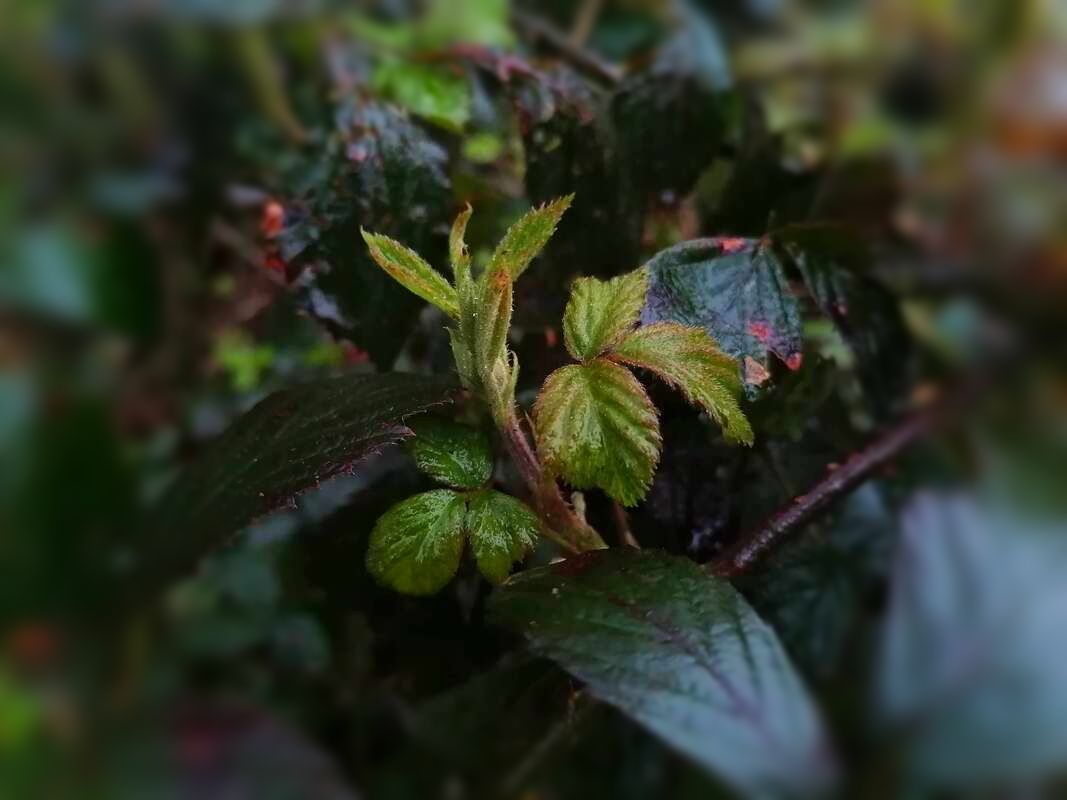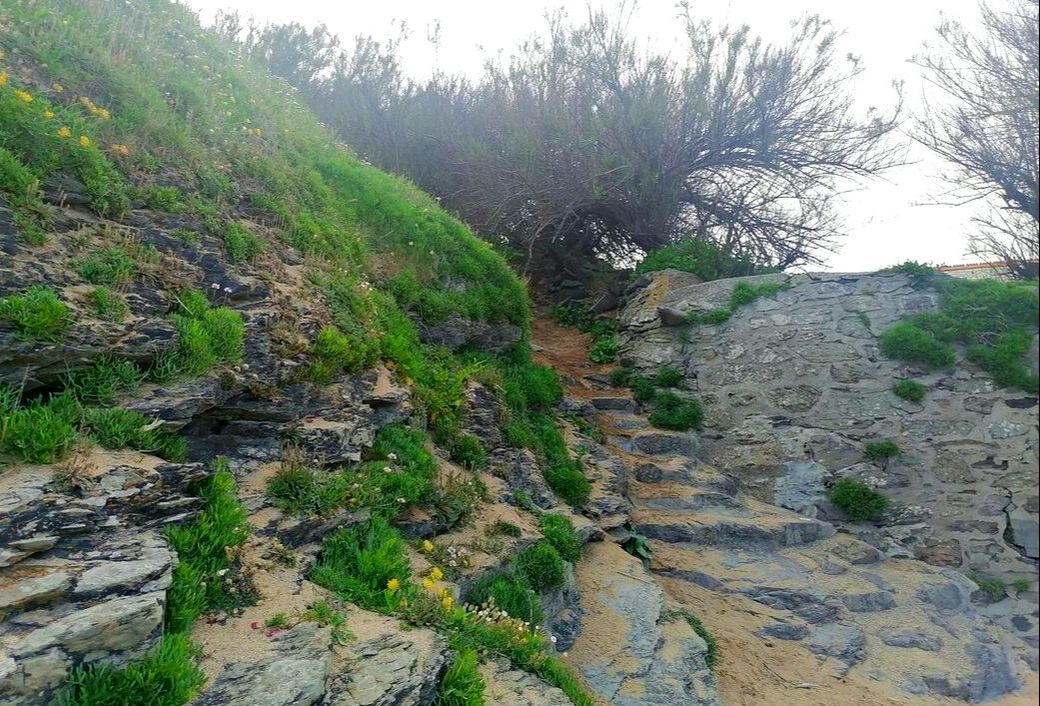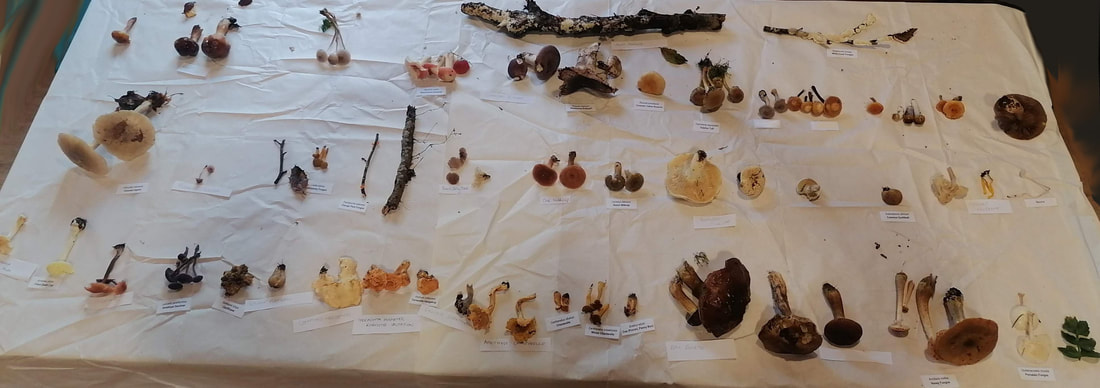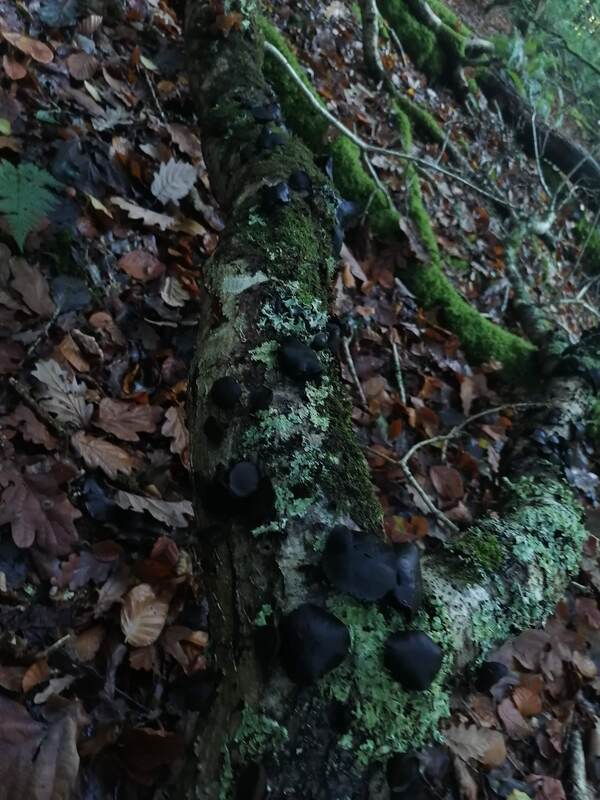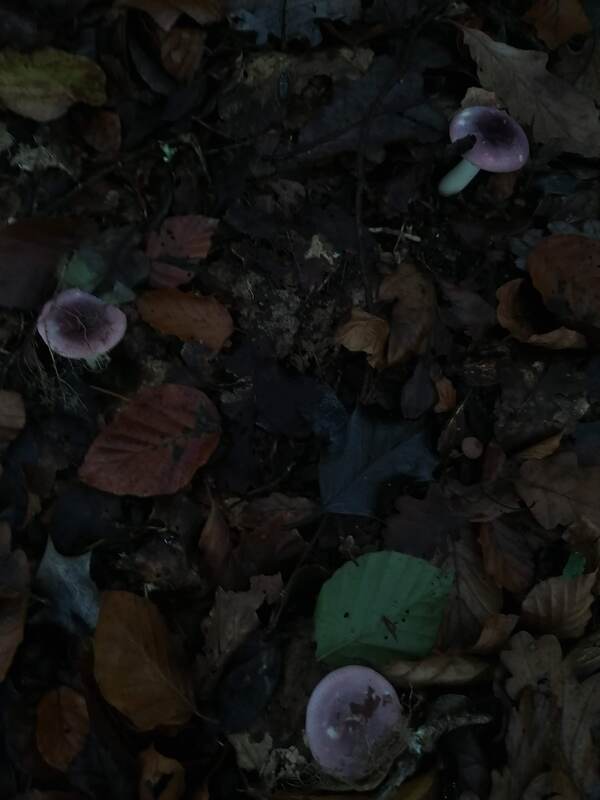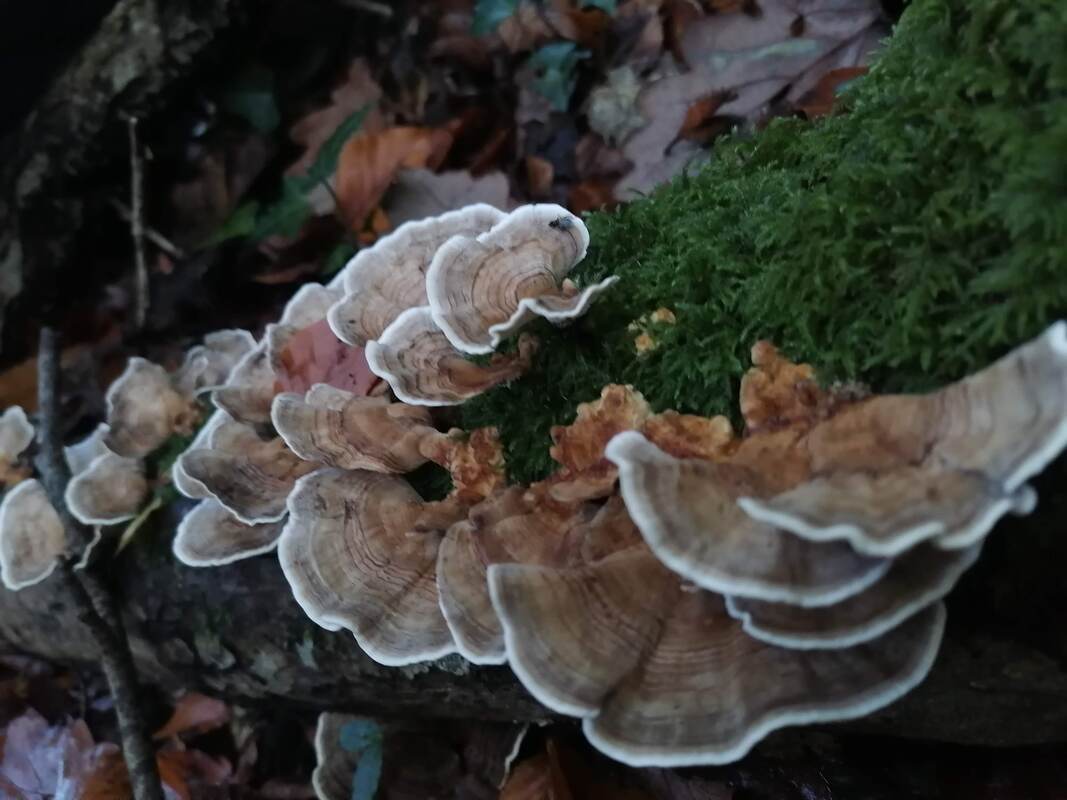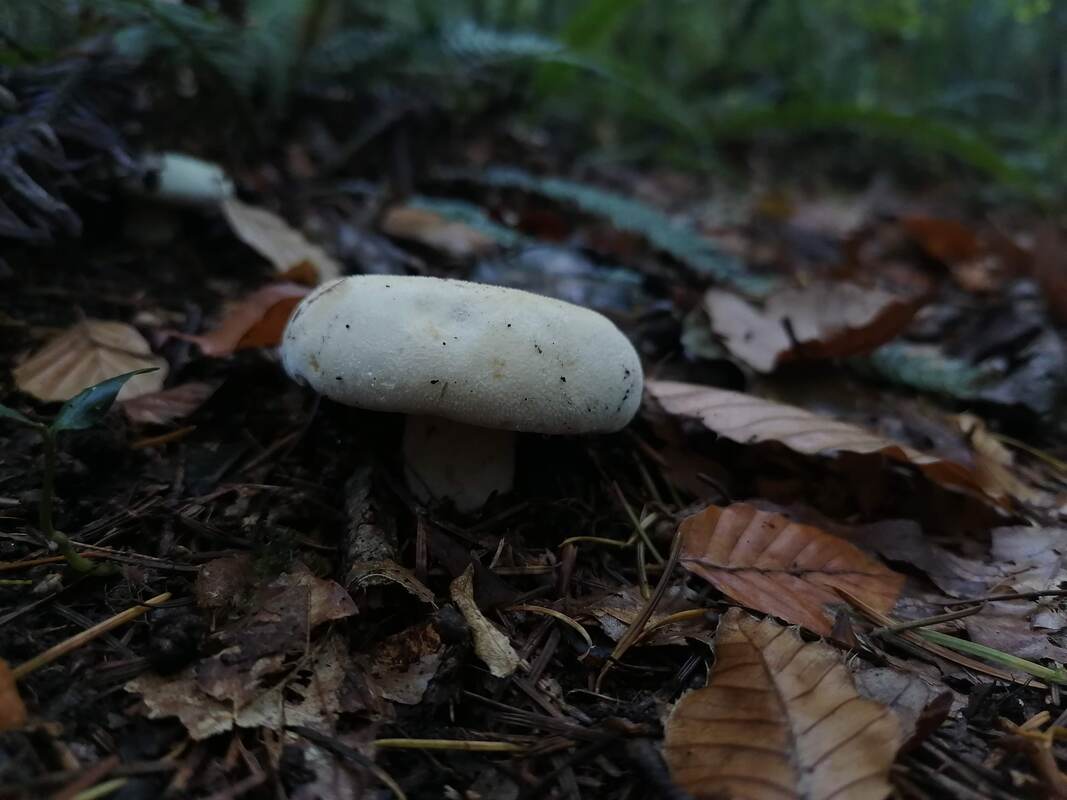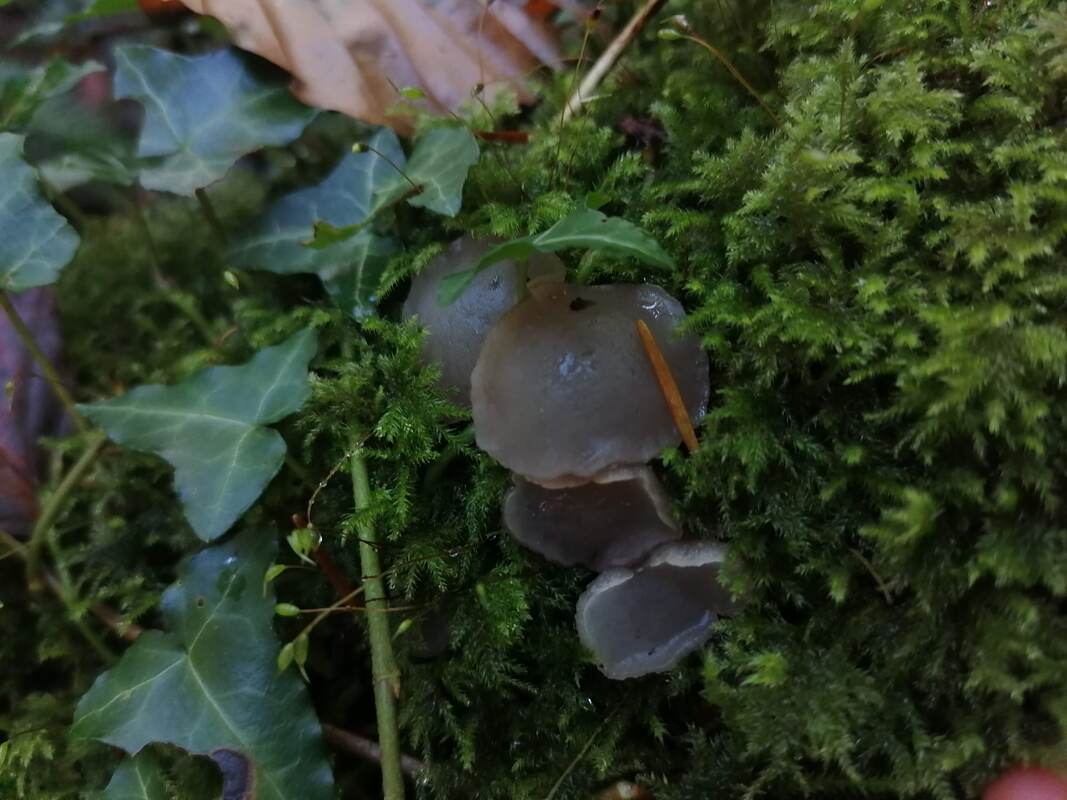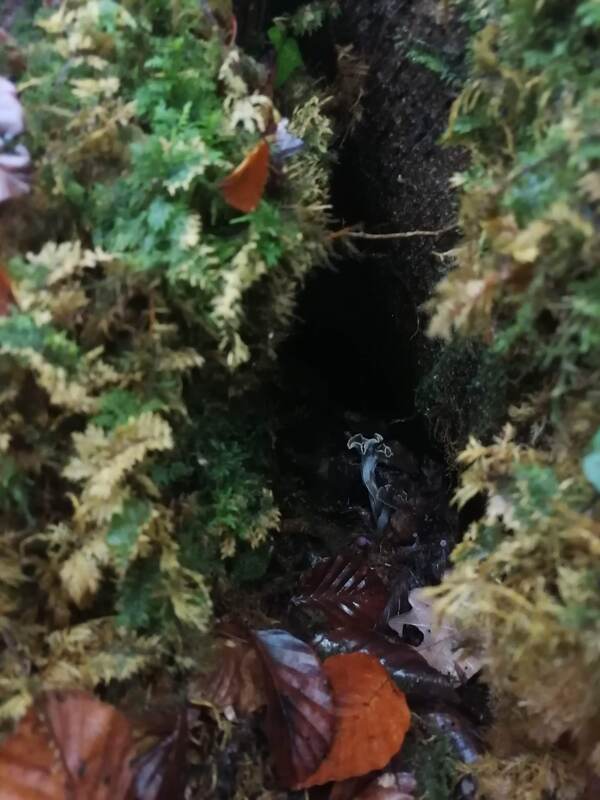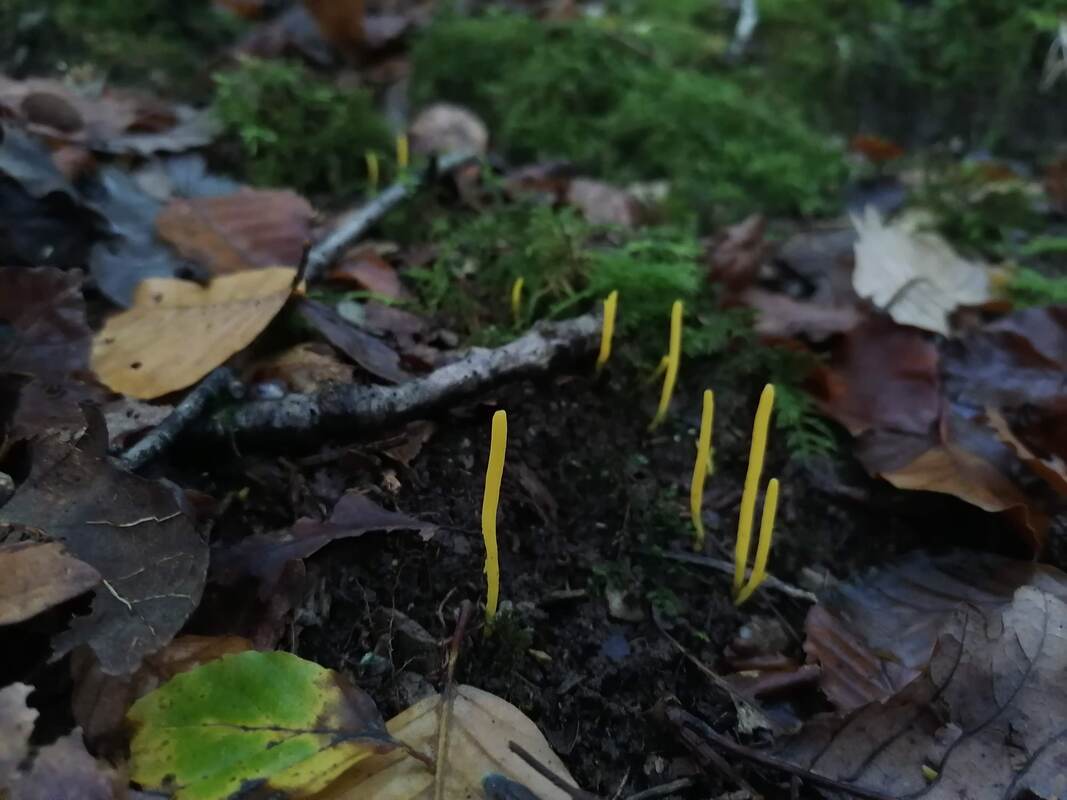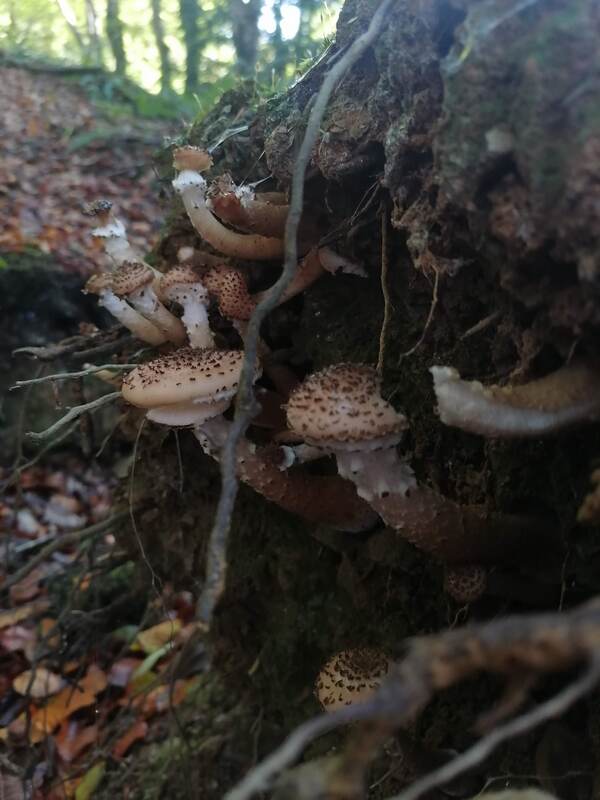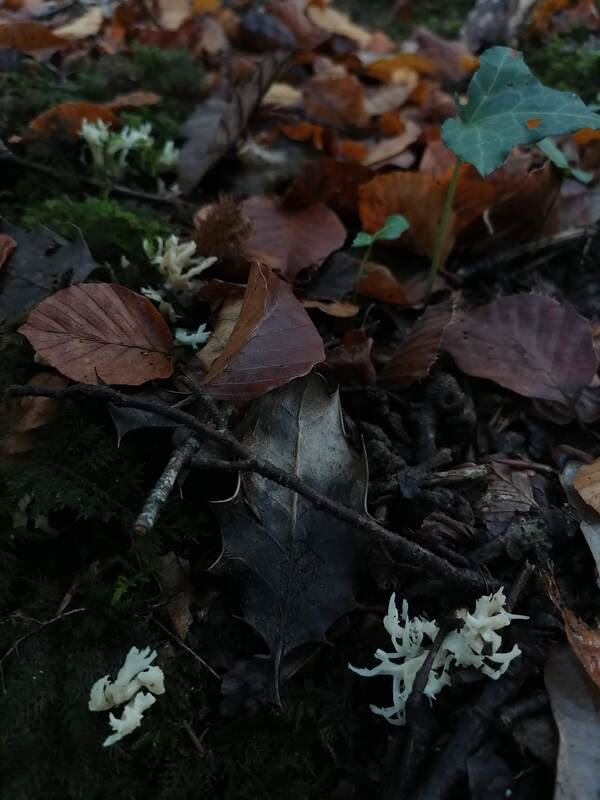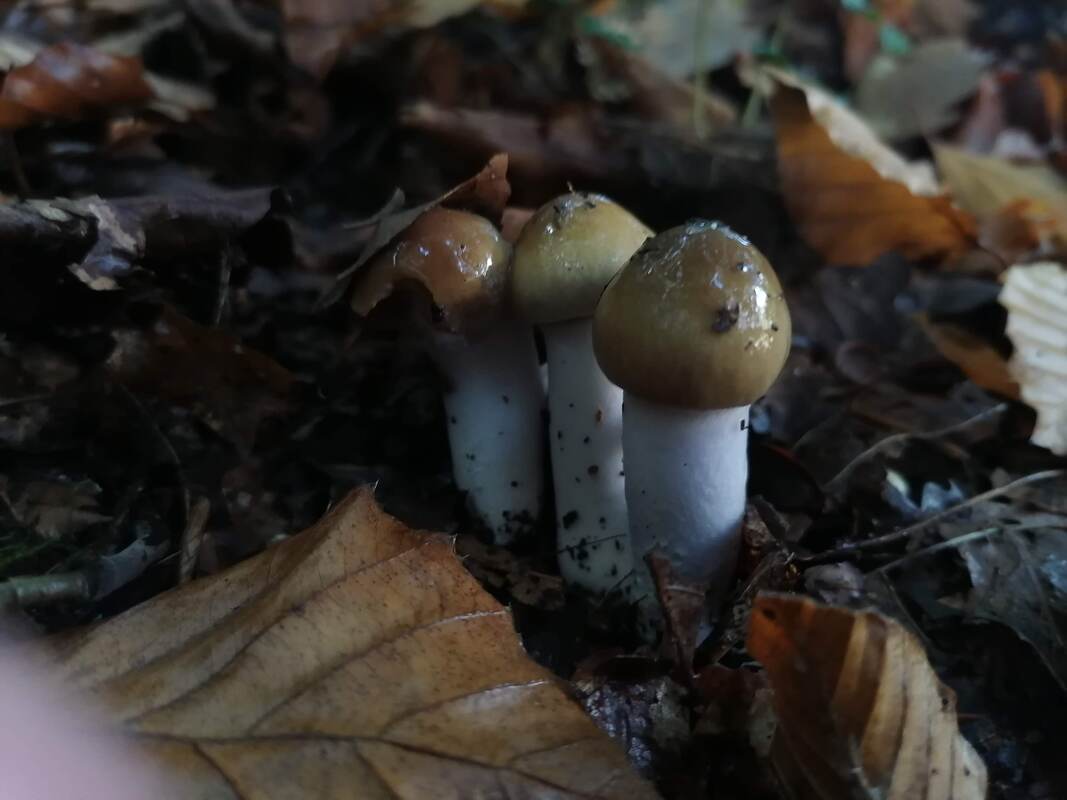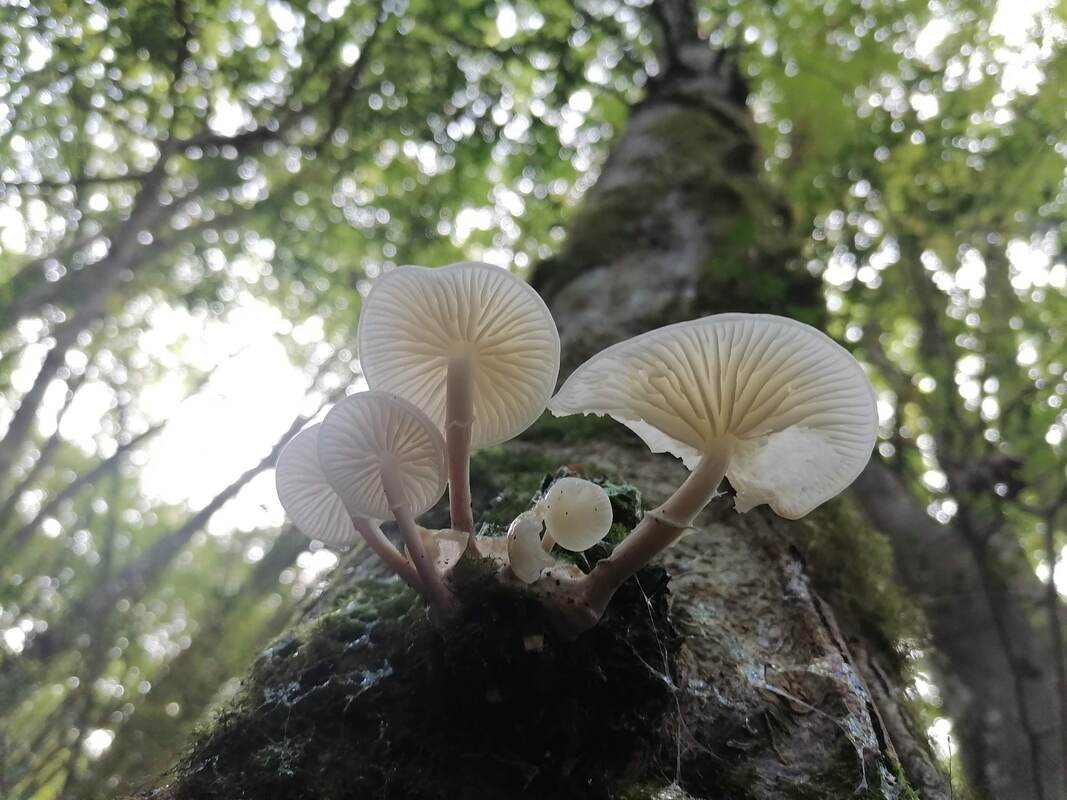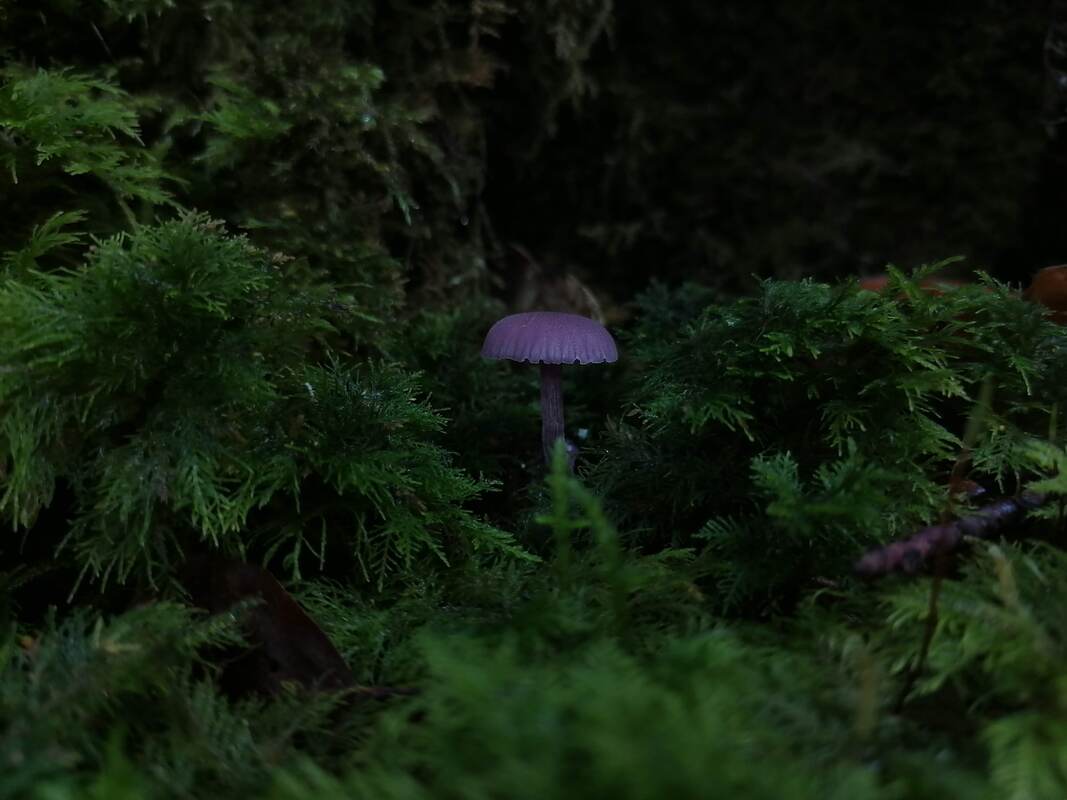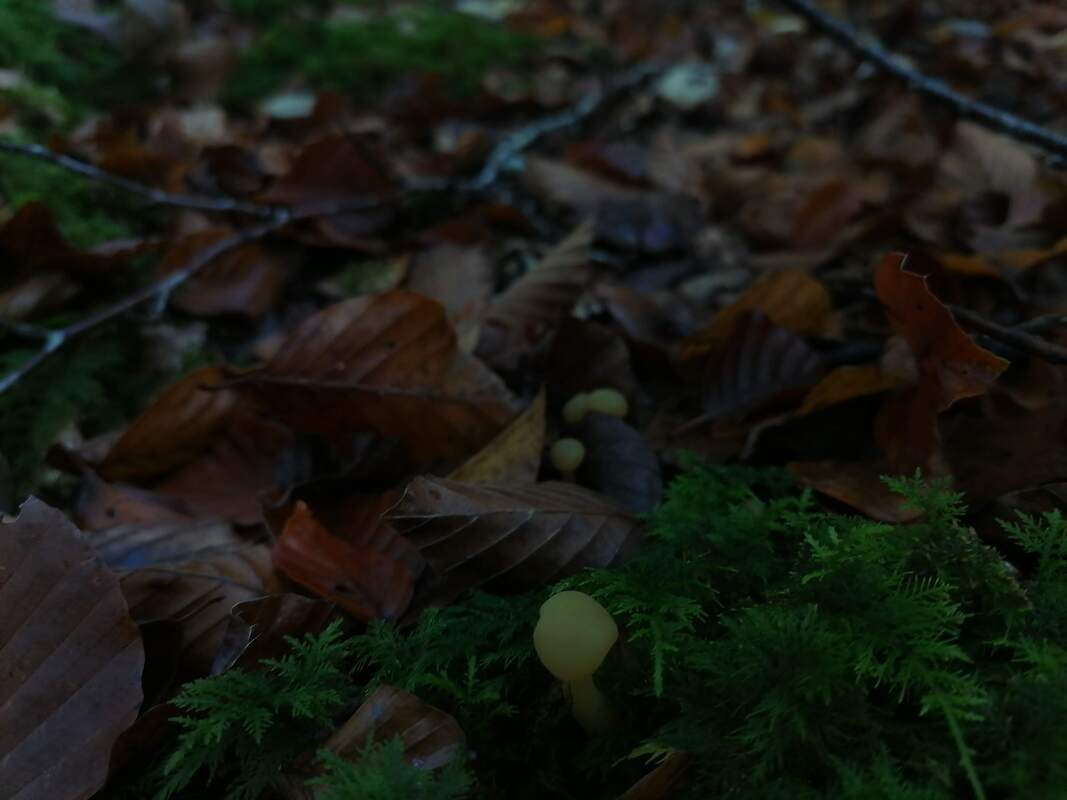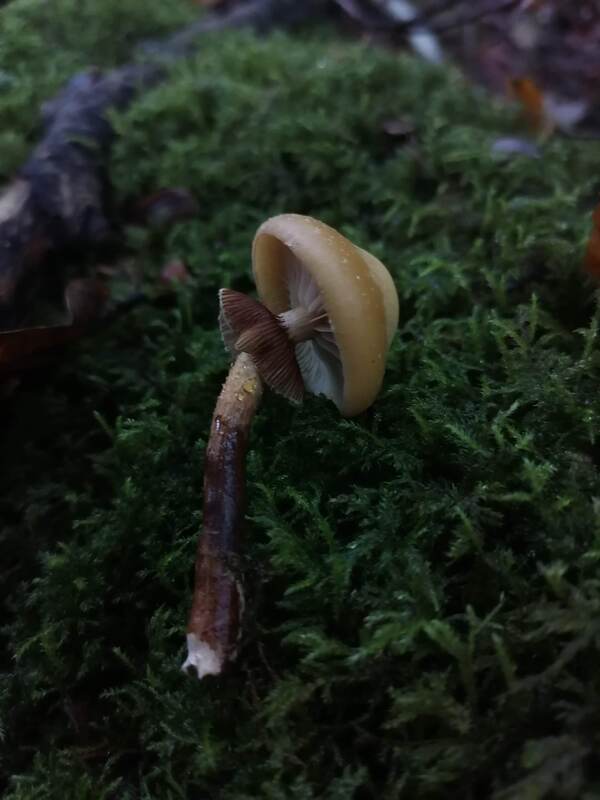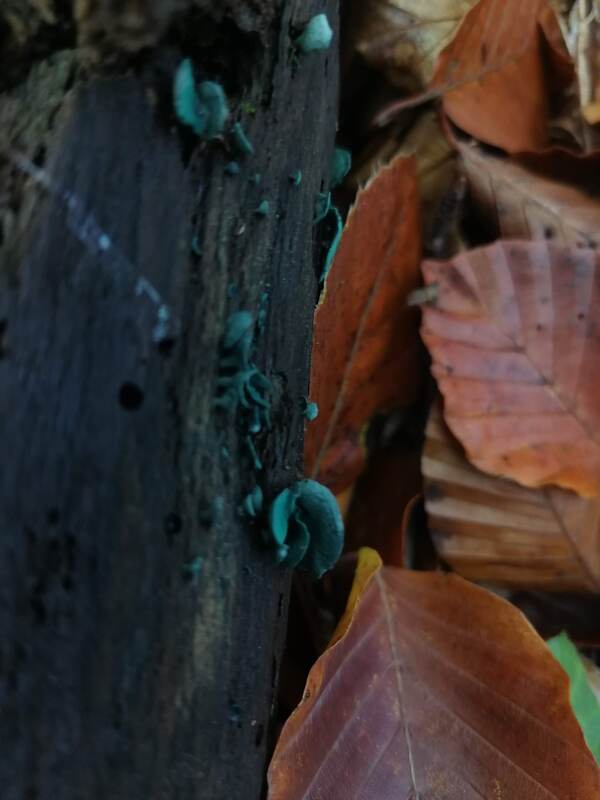|
This last weekend I had the pleasure of running several short foraging walks and two Wild Gin workshops at the Great Estate festival at Scorrier House. What a heavenly location this was! I always enjoy the Wild Gin workshops as I like to describe them as George’s Marvellous Medicine for grown-ups!
Unfortunately foraging Juniper berries to infuse into our vodka is almost impossible as it is almost completely absent in Cornwall. So this ingredient along with our lemons is foraged from our local shop.
0 Comments
“Harry waved his wand and shouted “Heracleum Sphondylium!” And from out of the ground a plant began to emerge.”
Common hogweed begins to sprout fairly early in Cornwall thanks to our temperate climate. I like to describe hogweed as tasting like asparagus on steroids, but this description does not do it justice. I have friends who dislike asparagus but adore hogweed. The young leaves are the best part, but do need to be cooked to remove any bitter notes. I particularly like to pair hogweed with eggs, but it also can make a great addition to any dish using greens or stir fries. I was asked to cater for a gin cruise a few years ago, and one of the canapés I created was hogweed frittatas. The aromatic flavour of the hogweed works so well with gin that I received praise on how well my canapés complimented the gins on offer, so I explained that I had created my canapés with this in mind! The young hogweed shoots are delicious made into tempura (we foragers love to tempura everything!), as well as the unopened flower heads that can also be used as a broccoli substitute. The larger leaves we often make into crisps: coat with oil and sprinkle with salt and cook on high for a few minutes (although this can be a bit hit and miss!).
I understand it has escaped from gardens in other parts of the country and has become problematic as specialist teams are needed to remove them. Giant hogweed can often be found near canals and waterbeds, it was popular for a time as an exotic garden plant due to its enormous size, but due to its scarcity here I haven't had the opportunity myself to see this monster in the flesh 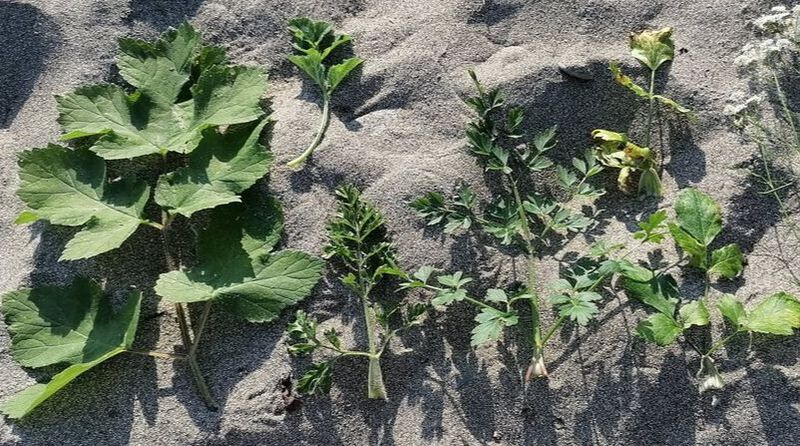 A selection of apiaceae leaves. Left to right these are: Heracleum sphondylium (large and small leaves), then Dacus carota, next to Oenanthe crocata with the last 2 leaves being Smyrnium olusatrum (peeking in the edge of the image to the very far right are the flowers of what I think are Conopodium majus).
I explain to children about the sap in hogweed and how they must be careful to not get it on their hands (because it has a lovely hollow stem children are often tempted to use it as a pea shooter!). When I then ask whether they think it is edible or deadible, the answer is always deadible. But, as the reaction is triggered by sunlight, and as most of us know (unlike Donald Trump!) U.V. is unable to pass through our skin and enter our digestive system, hogweed is perfectly safe to eat! A word of caution, hogweed is a member of the apiaceae family and to the amateur eye, the members of this family can resemble one another. The apiaceae family includes the most poisonous plants in the U.K., which are Conium maculatum and Oenanthe crocata (common hemlock and hemlock water-dropwort), so it is really important to ensure you get the right identification. Despite this, I think hogweed is one of the easiest apiaceae to identify, and if you want to focus on only one plant to forage I recommend hogweed because it is very delicious. I know children as young as 6 being able to accurately distinguish between hogweed and hemlock water-dropwort. The key is caution: fear gets in the way of learning, whilst caution keeps you safe.
A beginner's hack which will help you distinguish between certain apiaceae but isn’t a blanket tool for identification is to look for a U-shaped leaf stem covered in fine hair. Hogweed, as well as wild carrot and cow parsley (Dacus carota and Anthriscus sylvestris) all have this distinctive feature. The highly poisonous apiaceae Conium maculatum and Oenanthe crocata (common hemlock and hemlock water-dropwort) both lack these features: they have smooth, hairless stems which are circular in shape. For those who are worried, giant hogweed also lacks the groove down the leaf stem, but does have very sharp, prickly spines (unlike the hairs on hogweed, which are soft and almost fluffy). This tool can help you to narrow down which apiaceae you have and aid to make an accurate id!
Spring is finally springing into action! Wild garlic in Cornwall has just started flowering, Magnolia trees are covered in their aromatic flowers and hogweed shoots are out in force. So whether you are a local well versed in our vagarities or a visitor to this little slice of heaven, please read on to discover what you can forage for free RIGHT NOW! (Or scroll to the bottom for a comprehensive list.)
Smurnium olastrum commonly known as Alexanders loves the edges and the sea breeze. Hedgerows and roadside verges in Cornwall are covered with this aromatic plant. Currently this plant is in flower, but if you can find unopened flower heads they can make an excellent substitute for broccoli. But our favorite use of Alexanders is in the autumn, once the flowers have turned into seeds. These can be dried out and used in cooking as an aromatic peppercorn.
thrives. This is partly because of our coastal geography and partly because of our mining heritage. So please, whilst I encourage you to make the most of this plant, be mindful of foraging sustainably. The foragers’ favourite, Heracleum spondylium, common hogweed, is currently at it’s most delicious phase in Cornwall. The young shoots make a wonderful addition to any dish containing greens. Matt likes to describe this as “asparagus on steroids”. I however disagree, I don’t like asparagus but like most foragers I love hogweed shoots. Tempura is absolutely the best way to enjoy this hedgerow delicacy.
Crithmum maritimum, rock samphire, is a marmite plant, people either rave over it’s unusual taste whereas for others the heavily perfumed taste is too much. It clings to rock walls on beaches, favouring an above tide rocky niche. Strongly aromatic, Matt likes to pickle this which makes it much more palatable and served with cheese and biscuits. As much as I would love to go into detail about the various offerings available right now, I think a casual reader would get bored. I’ve included below a few seaweeds you might want to forage because whilst most seaweed is edible, not all seaweed is palatable! We are currently in peak seaweed season, towards the end of spring/early summer the seaweed starts to spawn becoming slimy and tough. Also during the summer months some seaweed completely dies back, which is why Matt doesn’t like to go foraging for seaweed after late spring. Please find below a comprehensive list of what can be foraged and eaten in Cornwall’s fields, hedges, beaches and estuaries during these Easter holidays. Hedgerow and Grassland Foraging:Allium Ampeloprasum var. Babingtonii Babington’s leek Allium triquetrum Three-cornered leek Allium usinum Wild garlic Allium vineale Crow garlic Brassica nigra Black mustard Capsella bursa-pastoris Shepherd's purse Cardamine hirsuta Hairy bittercress Galium aparine Cleevers Glechoma hederacea Ground ivy Heracleum sphondylium Common Hogweed Magnolia grandiflora Magnolia flowers Mentha aquatica Water mint Oxalis acetosella Wood sorrel Plantago coronopus Stagshorn plantain Plantago lanceolata Ribwort plantain Plantago major Broadleaf plantain Rubus fruticosus Bramble buds Rumex acetosa Common sorrel Smurnium olastrum Alexanders Taraxacum officinale Dandelion Urtica dioica Nettles Viola odorata Sweet violets Stellaria media Chickweed Fungi Foraging:Auricularia auricula-judae Jelly ear fungi Calocybe gambosa St. George's mushroom Morchella vulgaris Morels Pleurotus ostreatus Oyster mushroom Sarcosypha austriaca Scarlet elf cups Estuary Foraging:Apium graveolens Wild celery (this is incredibly rare, if you think you’ve found wild celery the chances are that it is actually it’s cousin, hemlock water dropwort Oenanthe crocata which is HIGHLY POISONOUS. This is not a plant for a novice forager.) Halimione portulacoides Sea purslane Triglochin maritima Sea arrowgrass Coastal Foraging:Beta vulgaris subsp. Maritima Sea beet Cochlearia officinalis Scurvy grass Crithmum maritimum Rock samphire Daucus carota Wild carrot Raphanus maritimus Sea radish Seaweed Foraging:Chondrus crispus Carrageen (used not so much for eating but as a thickening agent)
Duymontia contorta Dumont’s tubular weed Fucus serratus Serrated wrack tips Himanthalia elongata Sea spaghetti Osmundea pinnatifida Pepper dulce Palmaria palmata Red dulce Polysiphonia lanosa Sea truffle Porphyra umbilicalis Laver / nori Sargassum muticum Japanese wireweed Ulva lactuca Sea lettuce On Sunday the 23rd we had a glorious ramble around a beautiful woodland near Okehampton. We were anxious about the weather as our previous excursion here was very sodden, but fortunately the sun shone for most of the day, except for a brief shower towards the end. Our guests today consisted mostly of a large group of exuberant friends, whose joviality and friendliness encompassed not only Matt and I but the other guests. I forgot to bear in mind that the van drives slower than the car, so we arrived a little late, but our guests were gracious about the late start. The problem we have with these woods that we are literally tripping over fungi, the sheer quality and diversity is mind blowing, so Matt and I struggle to reign it in and keep things simple. Writing this up is going to be difficult as there were so many interesting or unusual or noteworthy species, so please bear with me! We were able to begin the walk with a stunning false white death cap (Amanita citrana var. Alba). Soon after this this Matt encouraged anyone who was brave enough (and pretty much everyone was!) to spit test the common yellow russula (Russula ochroleuca) which can be spicy or peppery when nibbled raw. Today we found a very peppery one! Much spitting followed this test, and we were happy with our identification. We then found a fascinating jelly fungus which... (ha ha) we were able to identify later as... Witches' butter (Exidia glandulosa) which (ha ha) according to First Nature (first-nature.com) an alternative explanation for its unusual name was that it was believed that throwing this fungus onto a fire would remove a witches curse! Another notable find was a pale bolete which stained blue and begun a discussion about pores and how boletes use these as a spre dispersal method. A few more fungi, and then we found some examples of two highly prized edible mushrooms, winter chanterelles (Craterelleus tubaeformis) with their beautiful yellow stipe (hence the American common name yellow legs) and terracotta hedgehogs (Hydnum rufescens) the key ident of which is the unusual spines so it easily identifiable for even the most novice of forager. As we walked on we discovered a lovely little fluffy white fungi growing on some dead coniferous wood. Matt later identified this as the powderpuff bracket (Postia pytchogaster). We had barely walked 40 meters away from the car park and had already discussed about 20 species! I was keen to press on but Matt found a beautiful large patch of false death caps (Amanita citrana) which led to one of our guests finding the rare sinuous chanterelle (Psuedocraterellus undulatus). Our excitement was nearly uncontainable, my apologies for all the squealing! A lovely long patch of these mushrooms were stress fruiting along the verges of the pathway. We then managed to finally cross the road to explore a different part of the woods, finding a small patch of orange pore fungus (Favolaschia calocera) on the way. Another noteworthy find (at least for me), was the bitter bolete (Tylopilus felleus) as this gave us the opportunity to discuss the most coveted edible mushroom, Cep / Penny bun / Porcini (Boletus edulis), as sadly we found none of these delicious fungi today but Matt was able to stress the importance of double, no triple, no quadruple checking your key identification features before consuming wild mushrooms. We went on to admire a particularly large patch of white club fungus (????) as we entered the coniferous patch of woodland, promoting a discussion about cauliflower fungus (Sparassis crispa), and lo and behold, we realised there was an absolute beast of a cauliflower growing under a pine tree next to us! Cue much excitement, and next to this beauty was a lovely example of a bay bolete (Boletus badius / Imleria badia). Bay boletes featured heavily on the rest of the walk, and Matt shared his tips for novice foraging of boletes, one of which is to stay away from blue staining boletes in general, except with this beauty as the staining is slow and in some instances non-existent (we are aiming to follow this up with a blog post on more tips for foraging boletes for beginners). Fortunately we were able to find enough samples of bay boletes that I think everyone who was interested were able to nibble on some raw and experience the taste to know one of the key features to look for. I know what several people are having for dinner tonight as we found enough for people to keep some for themselves. We then had quite a quiet patch, the fungi had retreated, but we then went exploring into the deepest darkest coniferous woodland, where the floor had a deep covering of moss with wood sorrel absolutely blooming everywhere. I managed to loose both myself and then the baskets briefly as I got caught up in the magic of the woods. One of the group found an absolutely gorgeous greeny yellow mycena which quickly became dubbed "the stunted brummie" in honour of this gentleman forager. Much teasing ensued, to the pleasure of the entire group. Hooray for keen sighted self-depreciating brummies! We also found a surprising amount of blushers (Amanita rubescens), the appearance of this mushroom emerging from it's volva was particularly phallic leading to some anecdotes about stinkhorns (Phallus impudicus), and although none were spotted today we enjoyed a good chuckle about this rude mushroom. One of the group then emerged from the woods clutching a false panthercap (Amanita excelsor var. spissa)asking if we'd covered this mushroom today. Both Matt and I were excited to see this mushroom as it was our first time! And what a beauty it was. Another super exciting discovery was made by one of the guests (honestly I'm not jealous of our guests finding all the interesting fungi!) a small mushroom parasitising on a blackening russula (Russula nigricans). This little beauty was so weird and alien and a true pleasure to see. Apparently common, the silky piggyback (Asterophora parasitica), which is very aptly named, this tiny 'shroom likes to feed on larger decaying fungi, in particular russula, and is a lovely example of why fungi are so important in protecting natures' balance, as this is fungi eating fungi to ensure we don't end up covered in fungi! (I'm not sure how true this is, but please forgive me some artistic licence). This may have been my favourite discovery of the day, huge kudos to the lovely guest who pointed it out to me! It was about then that we realised it was time to head back, so Matt took the group to search for a deathcap (Amanita phalloides) on the way back to the car park whilst I headed straight back to lay out some yummy treats for our guests. Their search was successful, so Matt was able to demonstrate a nibble and spit test on this most deadly, but apparently delicious mushroom. Definitely not one I'm willing to try, no matter how nice it tastes! We finished the walk with tea, bread, cheeses, parasol butter (recipe devised by Matt and will be subject to an upcoming blog post I promise!), home-made cashew nut cheese and a wild mushroom pate featuring both terracotta and common hedgehogs, chanterelles (Cantherellus cibarius), winter chanterelles and bay boletes. Whilst our guests nibbled Matt and I lay out, identified and labelled as many of our samples as we were able to. I would like to make a point of thanking all our guests today, as always our guests were polite, interested and engaged. But, in addition to this today's group, composed as it was of a large number of friends, was particularly fun and likeable. It was easy to share our excitement about fungi with you all, and certainly for me, today was the most fun you can have in the woods with your clothes on! Amanita citrina var alba / White False Death Cap
Amanita citrina / False Death Cap Amanita excelsor var. spissa / False Panther Cap Amanita phalloides / Death Cap Amanita rubescens / The Blusher Armillaria gallica / Bulbous Honey Fungus Ascocoryne sarcoides / Purple Jellydisc Asterophora parasitica / Silky Piggyback Boletus subtomentosus / Suede Bolete Calocera viscosa / Yellow Stagshorn Cantherellus tubaeformis / Winter Chanterelle Clavulina coralloides / Crested Coral Fungus Clavulina rugosa / Wrinkled Club Clitocybe nebularis / Clouded Agaric Clitocybe rivulosa / Fool's Funnel Cortinarius / Webcap with Rosecomb mutation Cortinarius bolaris / Dappeled Webcap Crepidotus / Oysterling Exidia glandulosa / Witches' Butter Exidia nucleata / Crystal Brain Fungus Favolaschia calocera / Orange Pore Fungus Helvella crispa / White Saddle Hydnum rufescens / Terracotta Hedgehog Hypholoma fasciculare / Sulphur Tuft Hypomyces chrysospermus / 'The Bolete Eater' (Bolete mold) Imleria badia / Bay Bolete Laccaria amethystina / Amethyst Deceiver Laccaria laccata / The Deceiver Lactarius blennius / Beech Milkcap Lactarius rufus / Rufous Milkcap Leccinum scabrum / Brown Birch Bolete Leotia lubrica / Jellybaby Fungus Lepiota / Dapperling Mycena Mycena epipterygia / Yellowleg Bonnet Mycena haematopus / (Bleeding) Burgundydrop Bonnet Oudemansiella mucida / Porcelain Fungus Paxillus involutus / Brown Rollrim Peziza / Cup Fungus Postia pytchogaster / Powderpuff Bracket Pseudocraterellus undulatus / Sinuous Chanterelle Russula nigricans / Blackening Brittlegill Russula nobilis / Beechwood Sickener Russula ochroleuca / Common Yellow Russula Scleroderma citrinum / Common Earthball Sparassis crispa / Cauliflower Syzygites megalocarpus / a mycoparasite Trametes versicolor / Turkey Tail Tricholoma terreum / Grey Knight Tricholoma ustale / Burnt Knight Tylopilus felleus / Bitter Bolete Xerocomellus cisalpinus / Bluefoot Bolete Xylaria hypoxylon / Candlesnuff Fungus 51 species: Armillaria mellea / Honey Fungus
Leotia lubrica / Jellybaby Fungus Amanita citrina var alba / White False Death Cap Amanita citrina / False Death Cap Amanita rubescens / The Blusher Boletus edulis / Cep (Porcini, Penny Bun) Bulgaria inquinans / Black Bulgar Cantharellus amethysteus / Amethyst Chanterelle Cantharellus cibarius / Chanterelle Cantherellus tubaeformis / Winter Chanterelle Chlorociboria aeruginascens / Green Elfcup Clavulina coralloides / Crested Coral Fungus Clavulinopsis Helvola / Yellow Club Fungus Clitocybe nebularis / Clouded Agaric Cortinarius / Webcap Cortinarius torvus / Stocking Webcap Crepidotus / Oysterling Exidia nucleata / Crystal Brain Fungus Favolaschia calocera / Orange Pore Fungus Ganoderma applanatum / Artist’s Conk Helvella elastica / Elastic Saddle Hydnum repandum / Hedgehog Hydnum rufescens / Terracotta Hedgehog (some with Rosecomb mutation) Hypholoma fasciculare / Sulphur Tuft Hypoxylon fragiforme / Beech Bark Spot Imleria badia / Bay Bolete Kuehneromyces mutabilis / Sheathed Woodtuft Laccaria amethystina / Amethyst Deceiver Laccaria laccata / The Deceiver Lactarius blennius / Beech Milkcap Lactarius pubescens / Bearded Milkcap Lactarius quietus / Oakbug Milkcap Leccinum scabrum / Brown Birch Bolete Lycoperdon pyriforme / Stump Puffball Marasmius hudsonii / Holly Parachute Mycena Mycena haematopus / Burgundydrop Bonnet Neobulgaria pura / Beech Jellydisc Oudemansiella mucida / Porcelain Fungus Peziza / Cup Fungus Pseudocraterellus undulatus / Sinuous Chanterelle Russula cyanoxantha / Charcoal Burner Russula nigricans / Blackening Brittlegill Russula nobilis / Beechwood Sickener Russula ochroleuca / Common Yellow Russula Scleroderma citrinum / Common Earthball Skeletocutis (nivea) / White Crust Fungus Sparassis crispa / Cauliflower Trametes versicolor / Turkey Tail Tricholoma ustale / Burnt Knight Xylaria hypoxylon / Candlesnuff Fungu |
